






































First off, I want to thank you for spending time with us for each of these issues. We are a small team that is determined to bring articles and education to you that makes a difference to your work, your company and, ultimately, the industry. Why? Because the team at SYNKD knows the design + build + maintain business and we are curating content that will help YOU. A rising tide raises all ships. No matter how small, niche or large your business is, we guarantee to inspire and educate you.
This issue highlights outdoor living as a concept and what you can do for your clients. Your clients don’t just want a patio— they want an outdoor oasis. They crave experiences: a tranquil retreat, an entertainment hub, a place for family to gather. That’s why we’re dedicating this issue (and part of all future ones) to helping you deliver those extraordinary outdoor living spaces.
Check out the resort-style backyard in the Florida Keys, as well as the newest building in the Denver skyline that is part-building, part-plants! Get volunteering with the Take It
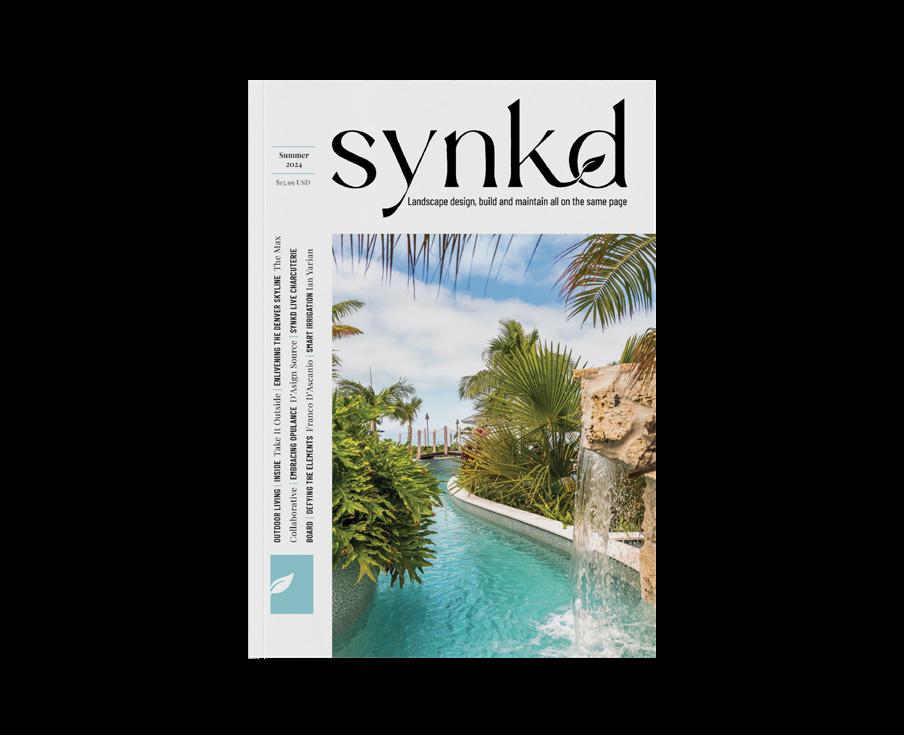

The latest on SYNKD, to bring you the most valuable resources, is that we’re moving to a membership model. But you don’t just get the print publication, you also get:
Get the print magazine delivered right to your door, plus access to exclusive online articles and resources through our membership portal.
Join our membership and get a whole network of friends, connect with fellow landscape pros and get personalized advice
on technical challenges and business growth. Think of it like a SYNKD Live event, but available 24/7. Scan the QR at the bottom of the page to join!
Also, next up is SYNKD Live 2025. Get ready for the biggest SYNKD Live yet. We’re teaming up with Turf’s Up Radio to bring you an unforgettable experience packed with networking, learning, bolt-on business ideas and inspiration.
As always, we’re here to support you. Reach out with questions, ideas or just to say hello.
Let’s create outdoor spaces that transform lives!


Industry news & dates to save
Don’t Stop at the Patio View products and services to increase your profit per project
Industry Leader
Tito Caceres Bloom Talent Solutions
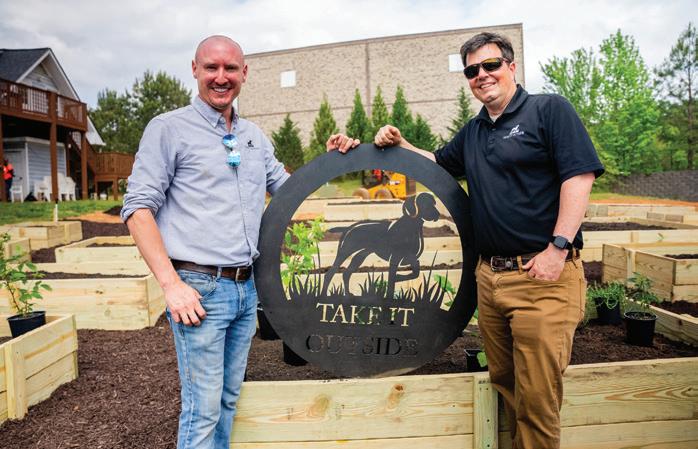
Enlivening the Denver Skyline The Max Collaborative Denver, Colorado
Seeking Shade
Dr. Damon Abdi, Ph.D LSU Ag Center

Connecting
Fabián
Monarch
Robin
LBL



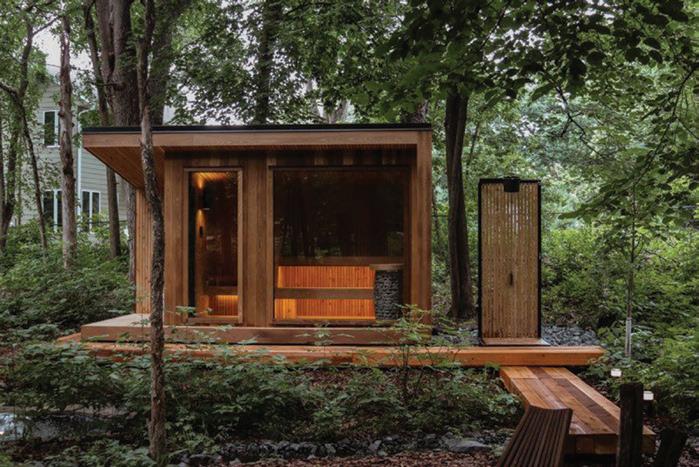





323 Polk Street Lafayette, Louisiana 70501
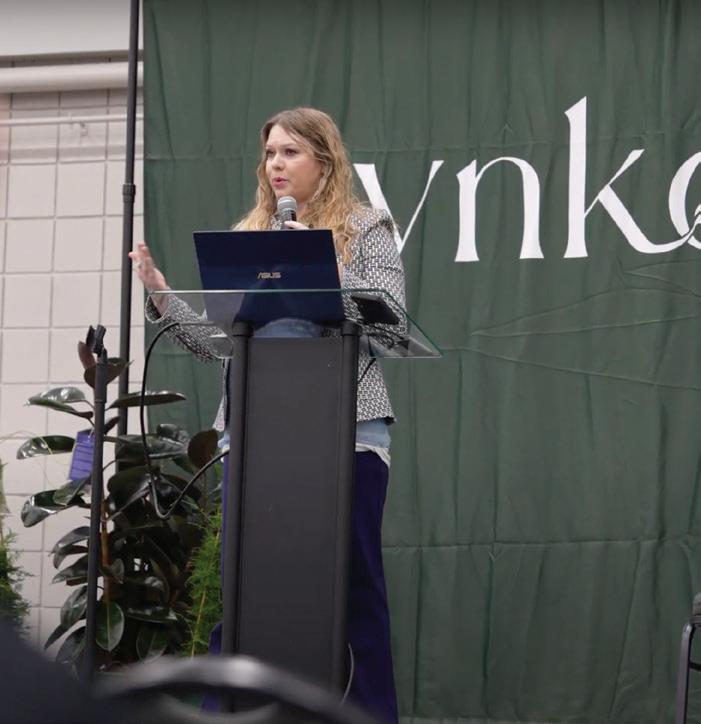

42 46 Quotes from SYNKD Live 2024: Part Two
Defying the Elements
Franco D’Ascanio Coastal Source & D’Asign Source

FEATURE SMART IRRIGATION
Ian Yarian explains two ways landscapers can save clients money and boost business

Next Issue: SYNKD Fall 2024 Technology & Quality
Contact Angelique Robb at angelique@synkd.io for more information on how you and your company can be featured in upcoming issues.
OWNER
Angelique Robb angelique@synkd.io (337) 852–6318
SALES EXECUTIVE
Tom Schoen tom@synkd.io (773) 490–9557
GRAPHIC DESIGNER
Caitlyn Wallace caitlyn@synkd.io
SUBEDITOR
Erin Z. Bass
WRITERS & CONTRIBUTORS
Sandi Schwartz | pg 12
Laura Lee | pg 16
Jenna Patrick | pgs 19, 27, 42
Fabian Sanin | pg 21
Robin Champ | pg 22
Angelica & Matt Norton | pg 24
Dr. Damon Abdi | pg 32
Alan Jalasjaa | pg 39
Ian Yarian | pg 49
PRINTED BY Sheridan www.sheridan.com
Published by © SYNKD
SYNKD is published four times a year and distributed to 5,000 qualified members of the green industry per region.
Postmaster: Send address changes to 323 Polk St., Lafayette, LA 70501.
SYNKD verifies information as much as possible. The views expressed by editorial contributors and the products advertised herein are not necessarily endorsements of the publishers. Reproduction of any part of this magazine is strictly forbidden.











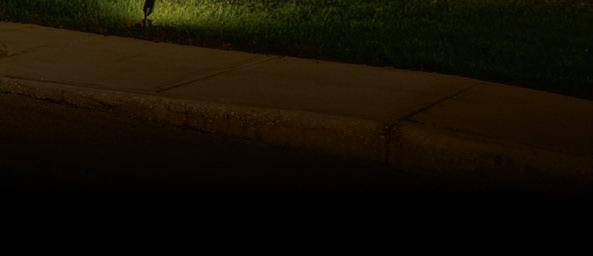







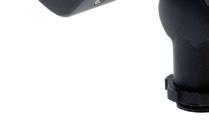


































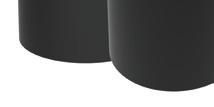






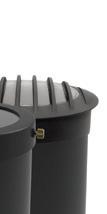
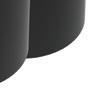




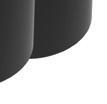
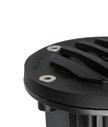

























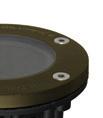

The Black Diamond line of fixtures feature spun brass construction with a baked enamel finish, making them economical options that are well constructed to stand the test of time, just like other Brilliance products you know and love.







INSIDE OUR COMMUNITY PAGE 8 Industry News | PAGE 10 Q+A | PAGE 12 Industry Leader:
Tito Caceres | PAGE 16 Inside Take It Outside | PAGE 19 SYNKD Awards | PAGE 21
Fabián Sanin: Connecting People to Nature | PAGE 22 Robin Champ: The Future of Landscape | PAGE 24 Angelica & Matt Norton: Making the Grade

Down to Earth (DTE) has launched the Female Workforce Development initiative which is a FORWARD (FWD) thinking program focused on recognizing and developing female team members. The goal of the DTE FWD initiative is to attract, retain and develop the best female workforce in the green industry through coaching, mentorship and training to accelerate career progression.


Created and led DTE Regional Business Development Manager Kayla Lujan, it was important to share her own career success with other females in the company. “I started my landscape career as a gardener level 1, meaning I had zero experience with any equipment or landscaping in general, but I was fortunate enough to have amazing mentors who were my account and branch managers. As strong female leaders themselves, they helped me develop my career into what it is today,” said Kayla, talking passionately about her 13-plus years in the industry. “It is important for me to create those same channels of opportunity for women here at Down to Earth.”

In a bid to nurture a green-fingered generation, Seed Your Future unveils an innovative Plant Education Grants Resource, addressing financial barriers hindering plant-based education. Recognizing the transformative potential of plant education, the initiative collates grants from charitable organizations and corporations, empowering educators to explore botanical realms with their students. The resource, accessible to all, features a dynamic platform for grant submissions, ensuring its relevance and inclusivity. With a mission to foster curiosity and problem-solving skills through plant science, Seed Your Future pledges ongoing support for educators and advocates championing youth engagement with the natural world.
Access the educator grants resource at www.seedyourfuture.org/educator_grants


The American Green Zone Alliance (AGZA) recently completed a landmark project with Pasadena City College. The influential Community College was the first AGZA Certified Green Zone established in the City of Pasadena, California. The Level 2 certification requires all handheld tools, in addition to small and large electric mowers, to be used for routine maintenance on all college campus grounds.
Suntek Lawn Care is proud to announce a significant expansion of its fleet, reinforcing its commitment to eco-friendly lawn care across Florida. The new fleet comprises seven advanced units, along with trailers and additional equipment, all designed to deliver superior, sustainable services efficiently.
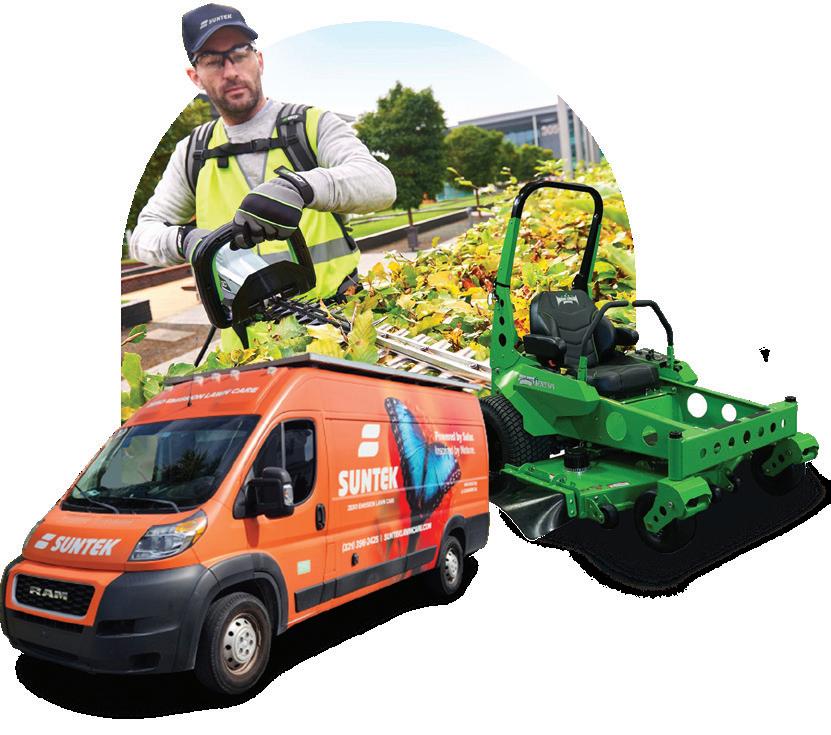
In a notable step toward sustainability, all new units are equipped with state-of-the-

SUSTAINABLE LAWNS & BUSINESS
DEVELOPING RESOURCES FOR YOU
art electric-powered tools. This ecofriendly technology not only reduces Suntek’s carbon footprint, but also ensures quieter operations, minimizing noise pollution—a welcome advancement for residential areas with noise restrictions.
YOUNG ENTREPRENEUR DEVELOPS COSTING SOFTWARE FEEDBACK ON SYNKD LIVE 2024 EVENT!
TREE
CHANGING
Gary Krause
Tom & Traci O’Brien
Jay Worth
Shiloh & Austin
Frank Mariani
Gary Krause
Randall Tolbert
Nate Fuelleman
Scott Seargeant
Fabián Sanin
ZEVBIT
PREMIER GROUP
FIVE TRAKS
ROSETA STONE
SEARGEANT LANDSCAPE & ARBORICULTURE
MONARCH LANDSCAPE COMPANIES




These Add-On Products & Services Increase Your Profit Per Project with Minimal Additional Effort


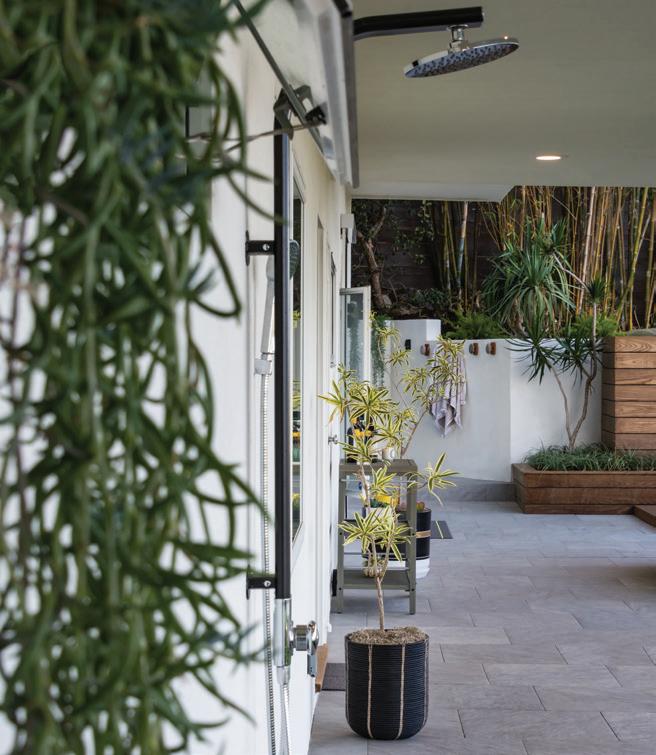
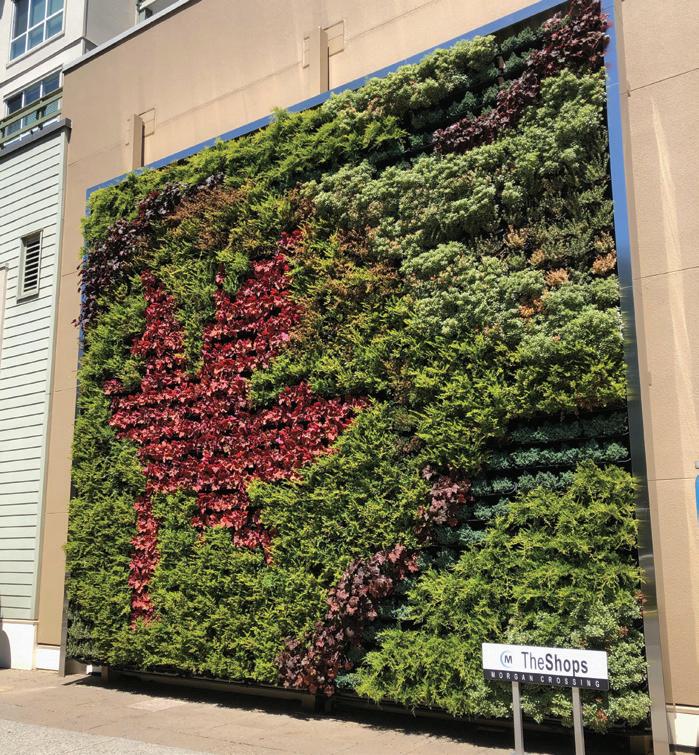



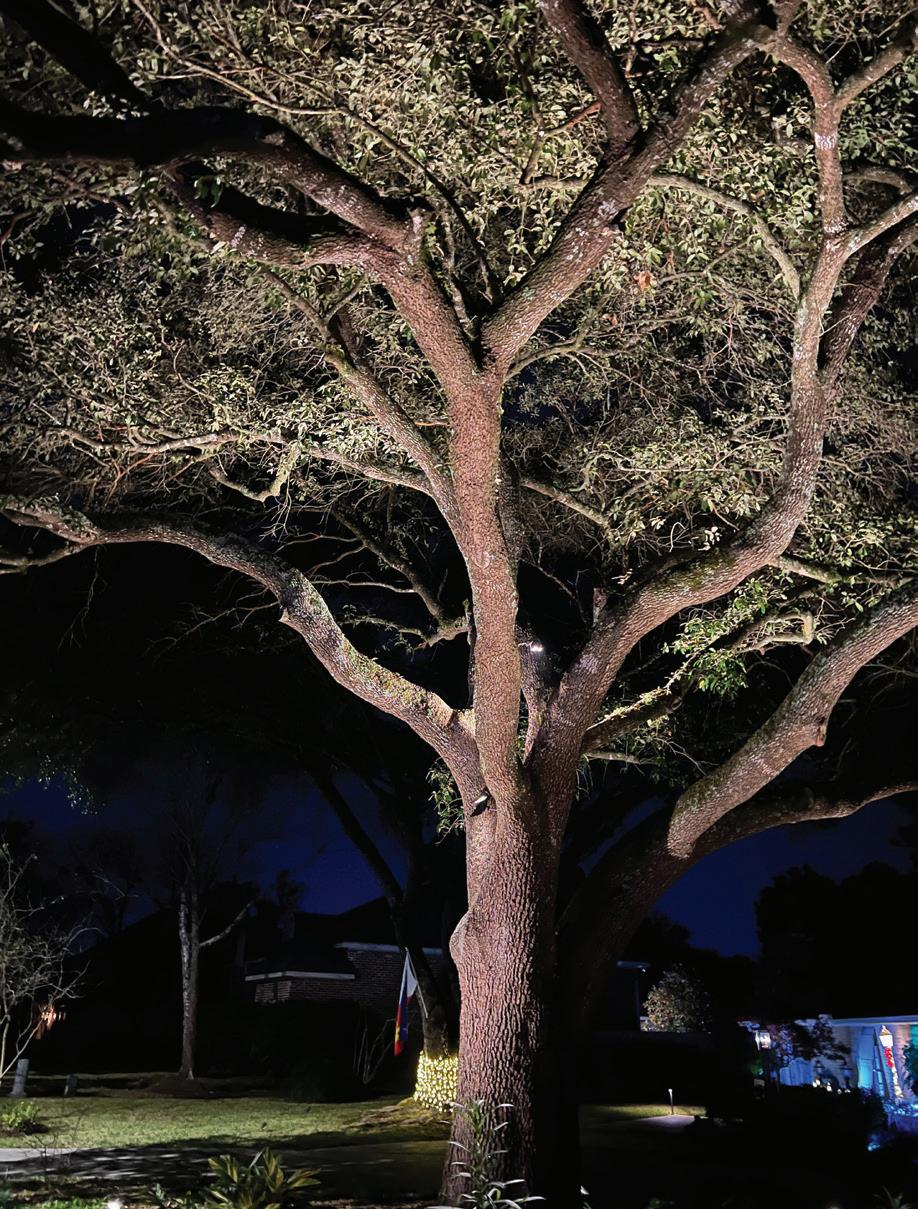

How Bloom Talent Solutions Helps Companies Strategically Grow
With a market size of about $130 billion, the landscape services industry employs more than 1.2 million people, according to the IBIS World Landscaping Services Industry Report. The market size of the landscaping industry continues to grow at an average of 5.3 percent per year, with an abundance of critical job roles to fill. In fact, unemployment in the landscaping industry is essentially negative; there are more jobs than there are people willing to take these positions.
That’s where Managing Director Tito Caceres and his team at Bloom Talent Solutions come in. They specialize in
recruiting and strategic growth consulting for the landscape, construction and facility services industries. “We’re recruiters for the landscape industry and we understand that world and the different profiles that these companies may need,” explains Tito. “We understand the nuances and have very niche knowledge to effectively find the right people in an efficient manner.” Spread across the United States, the team of eight (and growing) fills skilled labor positions all the way up to executive level roles.
Tito is a seasoned sales leader, recruiter and the driving force behind Bloom Talent Solutions. As someone who grew up in the landscaping industry, it was his dream to launch a landscaping recruitment firm to help bolster the industry. He was
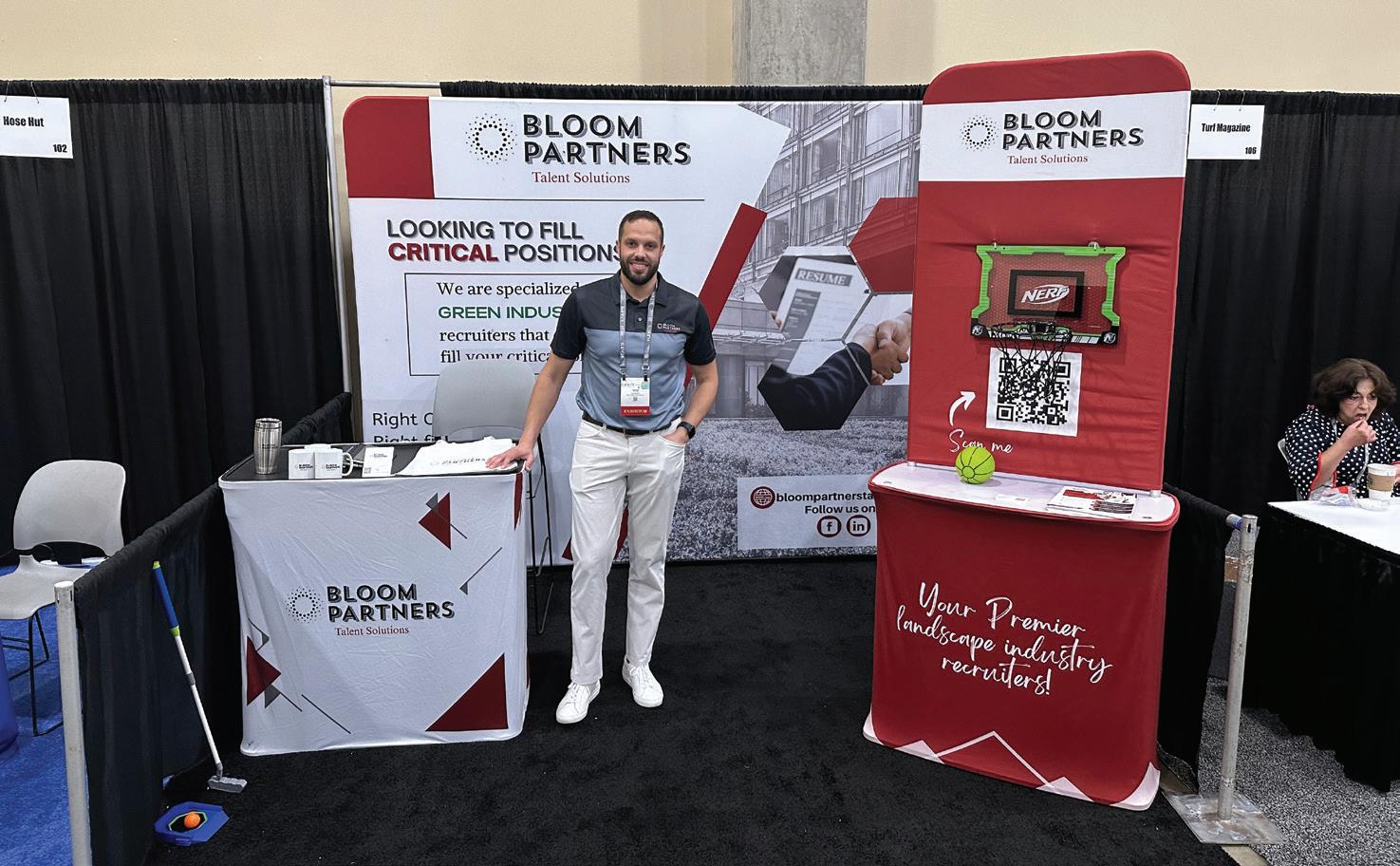

employed by several landscaping companies over the years and quickly worked his way up. “They gave me a management role when I was 19 or 20,” he recalls. “It led to me eventually working for a larger corporation where I began to understand the national feel of landscape companies and the commercial side.”
As a result of these experiences, he learned that recruitment was a common pain point for landscaping companies. “From working in the field to working for larger corporations, it was always very common that everyone needed people. They had to staff up to render their services.” He knew he could help fill this need.
“I had a knack for nurturing anyone to become a better field employee. I was constantly recruiting on my own,” he says. Tito eventually joined a recruiting agency as a generalist to work within the landscape industry. “So, I learned recruiting and had field experience and management experience in the landscaping industry. I eventually found an opportunity to do it on my own, which is why I started the company.”
Since debuting in September 2021, Bloom Talent Solutions has worked with more than 30 recurring clients and sourced over 4,000 professionals nationwide to fill roles in the following areas: landscape management and development; construction and engineering; facilities service management; accounting and
finance; sales and marketing; and executive leadership.
Making a Difference in the Industry
Bloom is more than simply a job for Tito—it’s a passion.
I am motivated to help the industry. I think Bloom can make a real difference. I want to be more of an ambassador for this industry than anyone, in my opinion, has done before.
This essence is highlighted by the core values listed on the company website that shape everything they do: love, performance, empowerment, quality and, of course, passion.

One way Tito hopes to shift the industry is through transparency. “There’s a lot of stigma behind what recruiters do,” he says. “I want to bring a more positive understanding of what recruiters can do

to help. Hopefully, a little bit more transparency will show how hard this job is, what we do and how much value we can actually bring.”
He tackles this by communicating to current and potential clients through newsletters, reports and a future podcast in the works. He really wants business leaders to understand the value gained from working with a recruiter to help their company thrive. “We’re trying to find the best talent out there,” he says. “That’s why people hire us. There’s major value in recruiters. Budget for them. You will find talent much faster than your traditional ways of posting a job—more than most people are accustomed to.”
Another way that Bloom is making a difference is by focusing on building strong, authentic relationships with both the clients and the talent.
We are relationship ninjas. It’s all we’re doing day in & day out—establishing relationships.
Although they have tons of technical tools to help with recruiting, Bloom’s most valuable asset is relationship building. This can look like phone calls and Zoom meetings, local in-person meetings and participating in trade shows. In fact, Tito raves about his experience at SYNKD Live 2024. He made some great connections with owners of a landscaping radio station and discovered how many podcasts exist in the industry to learn from others in the
field. Overall, it was an incredible networking opportunity because of the more intimate size of the event.
“Being the only landscaping recruiting agency at the conference helped me be able to have very long conversations with most people that I would not have had at other shows,” he says.
I think the size is to its benefit. People are more open to talk. I loved that about SYNKD Live & look forward to going again.

He also believes that there are not enough recruitment companies in this industry overall and hopes to help guide this change. “If I think about the industry as a whole, I think there should be more recruiters,” he says. “But there’s a very big difference between HR [human resources] and recruiting. Recruiters are great salespeople. HR people are more focused on compliance and about keeping the people and nurturing the team that you have.”

Tito’s goal is to expand Bloom to become the No. 1 go-to recruitment agency for the landscape industry. “We are trying to position ourselves that way. It is not easy what we do, but we are not only trying to provide a very transparent approach, but also an efficient approach, and very tailored to the landscape industry.”
The company also hopes to grow its internal recruiting optimization program, a service that helps landscape companies improve their internal HR teams and recruitment teams, and to add sales and financial consulting services. “This is something that’s pretty new to the industry. We had a recruiter go out and train the HR person to be a recruiter, and
we have a full program to show them how to do this. It was a success and we’re hoping to continue to do that.”
If you are looking to staff up and grow your team, reach out to Bloom Talent Solutions for support.
Titi Caceres Managing Director Bloom Talent Solutions
Email: tito@bloompartnerstalent.com www.bloompartnerstalent.com






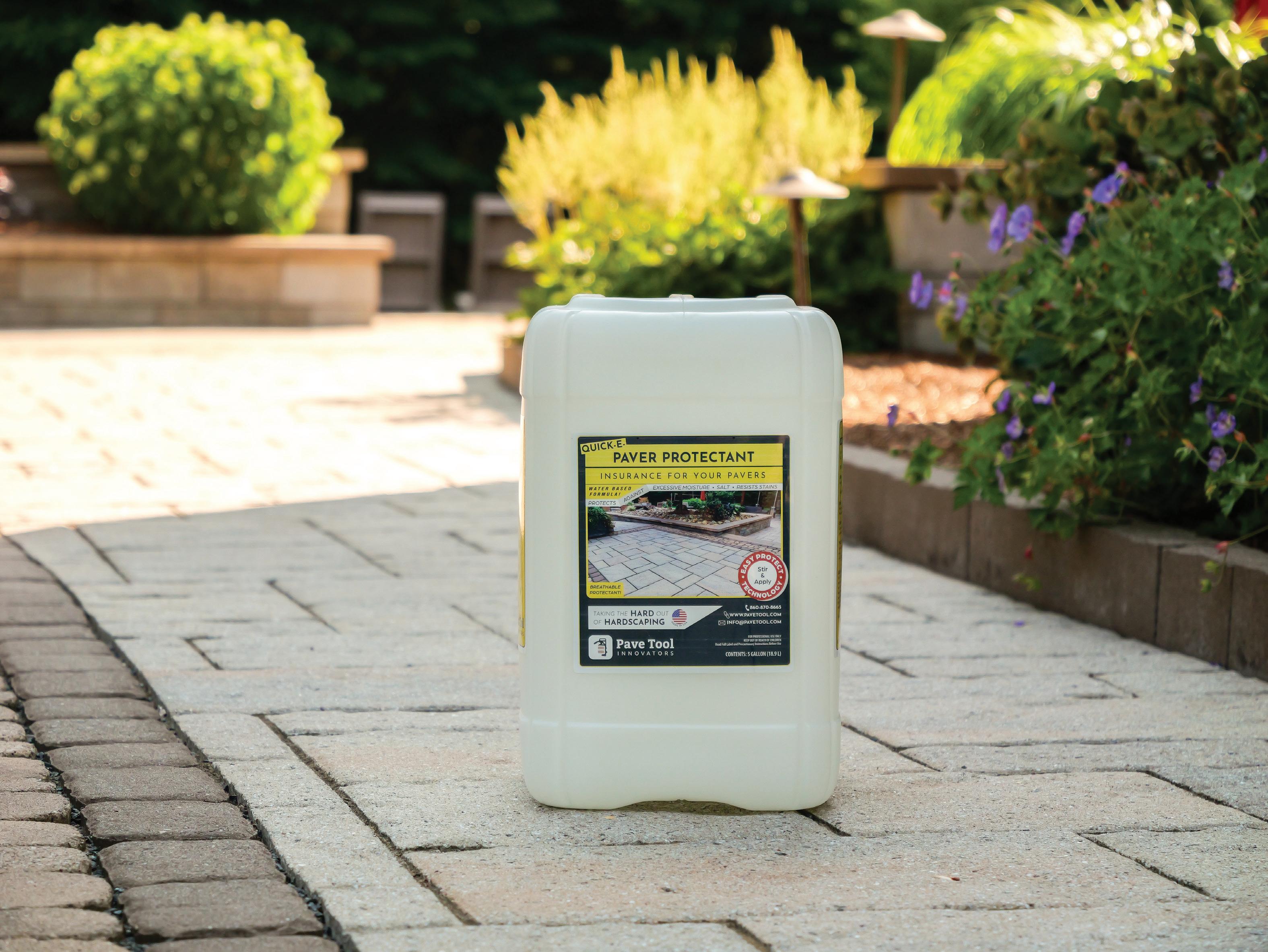


In metro Atlanta, the outdoor service industry is sharing their time and talent to create meaningful outdoor spaces for local nonprofits.
Founded in 2021, Take It Outside brings outdoor service professionals together across multiple sectors, skill sets, nationalities and cultures. Throughout the year, members meet to network, share best practices and give back—from designing to building vegetable gardens for kids to creating therapeutic outdoor spaces for men facing addiction and mental health challenges.
The idea for Take It Outside was fittingly formed outdoors by a couple of friends on a hunting trip. “As we shared stories around the fire of projects and services related to our industry, I realized the friends who came together that day could design, build, repair and service any need that was part of an outdoor project,” says Randall Tolbert, founder of Take It Outside.
Randall, who has spent his career creating
and growing companies like FiveTraks, Maxwell Landscape Construction and Yardsy, saw launching an outdoors-based nonprofit organization as a natural fit. He asked Zach Coward to be the executive director and Tara Potts to be the CFO. Together, they launched Take It Outside.
Successful companies are always built on a foundation of core values that drive positive, steady momentum, & it’s the same for a nonprofit.
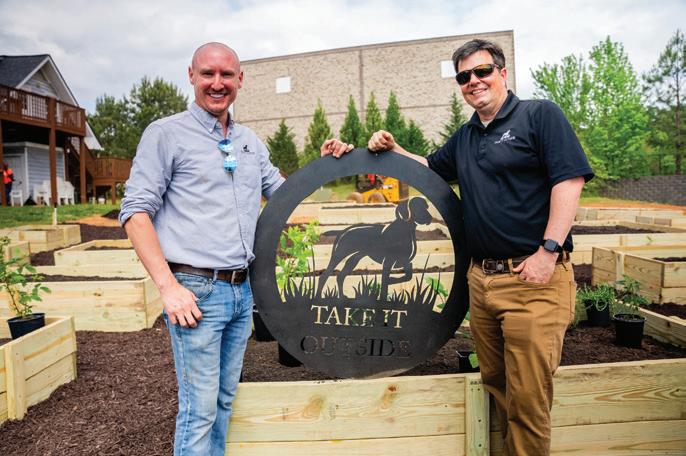
In just three years, Take It Outside has grown to more than 400 members from dozens of companies, including landscape professionals, business owners, skilled laborers and industry equipment and chemical suppliers, as well as supporting services such as investment banks, insurance companies and law firms.
Free to join, Take It Outside offers a series of community service projects and engaging social events, ranging from golf tournaments to pheasant shoots driven by Event Coordinator Lindsey Morris.
“Some of our members may not have played golf before or gone hunting
before, and we’re going to make sure they have that experience,” says Randall.
It’s all about having fun, coming together as an industry & learning to give back.
Take It Outside volunteers have completed two community projects to date and are already working on several more. Tolbert says any nonprofit needing to build or enhance a landscape that encourages outdoor activity can apply, but they are especially seeking organizations that align with their core values.

“We’re looking to partner with organizations that are encouraging people to get outside,” he says. “The more you’re outside, the better it is for your mental health. You go outside and your heart rate drops, and your anxiety is lessened. You’re no longer in an environment of stress.”
Take It Outside recently completed a project at No Longer Bound in Cumming, Georgia, a residential treatment facility for men facing addiction. Joe Guida with LandCare LLC served as the project




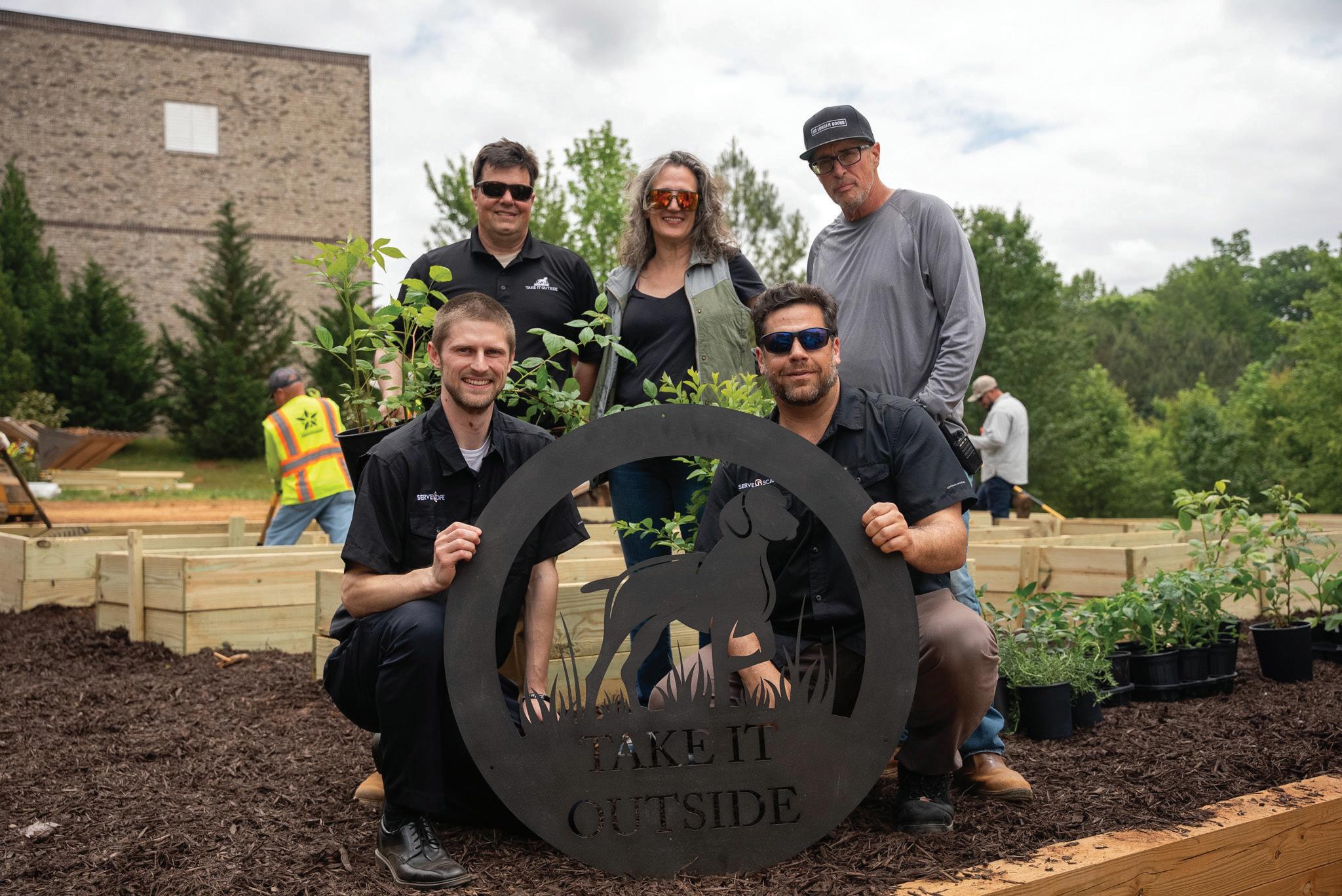

captain. More than 20 companies and over 60 volunteers with Take It Outside designed and installed a therapeutic garden for families to reunite and for patients to find peace and respite during their recovery.
“The project was valued at $107,000, but No Longer Bound didn’t have to fund it,” says Randall. “We built it for them, so they could focus on helping their patients—and the work they do is amazing.”
In 2023, Take It Outside worked with Soccer in the Streets, a nonprofit organization that gives all kids in metro Atlanta the opportunity to play soccer. The first of its kind in the world, the organization’s StationSoccer program has installed soccer fields at five public transit stations. For the West End MARTA station, Dexter Maxwell, president of Maxwell Landscape Construction LLC, served as the project captain. Take It Outside installed drainage systems, accessible ramps and a community vegetable garden to improve the space and enhance the experience of the players and their families.
The process for each Take It Outside community project begins with the design phase, typically led by a landscape architect. The second phase is the project launch, where a volunteer captain determines the scope of work and any supplies, permits,
legal assistance and labor needed. The captain then recruits volunteers based on skill set and raises funds as needed. The final phase is construction day, when all the volunteers work together on site to complete the project.
Randall says the finished product is always rewarding not just for the nonprofit, but the volunteers as well.
It’s not about writing a big check, it’s about giving back by doing the work.
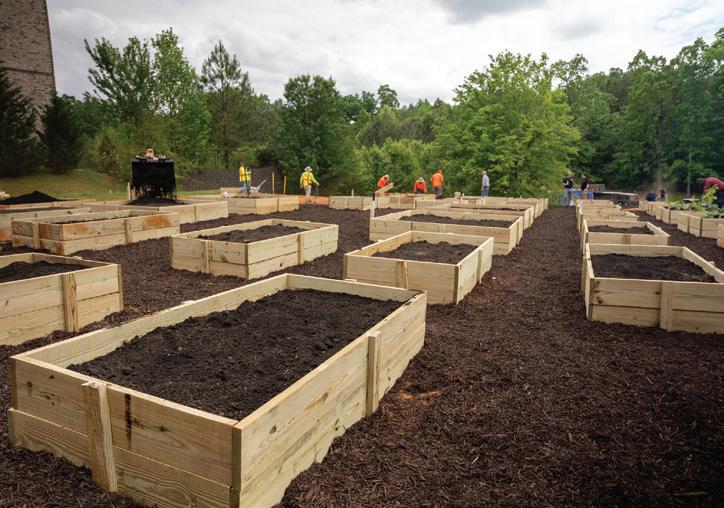
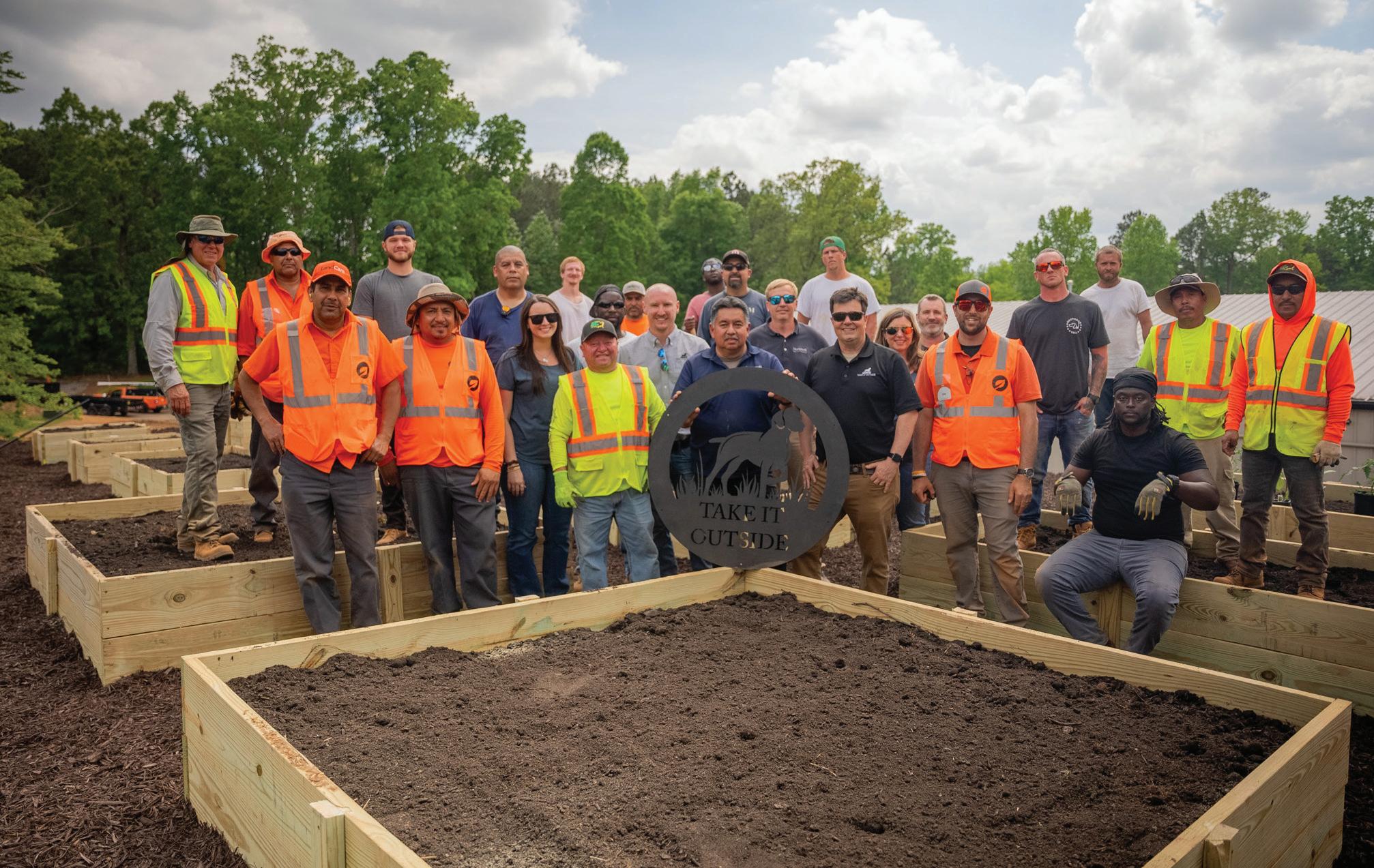

Randall says the projects are also a fantastic way for members to display their skills and build their portfolios. “Our community projects are professionally done. We are doing cutting-edge, innovative things in the outdoor service industry and exceeding expectations.”
For the future, Randall would love to see additional chapters of Take It Outside open around the state and country. “The bigger we get, the more nonprofits we can partner with,” he says, “and the more projects we can do to encourage more people to get outside.”
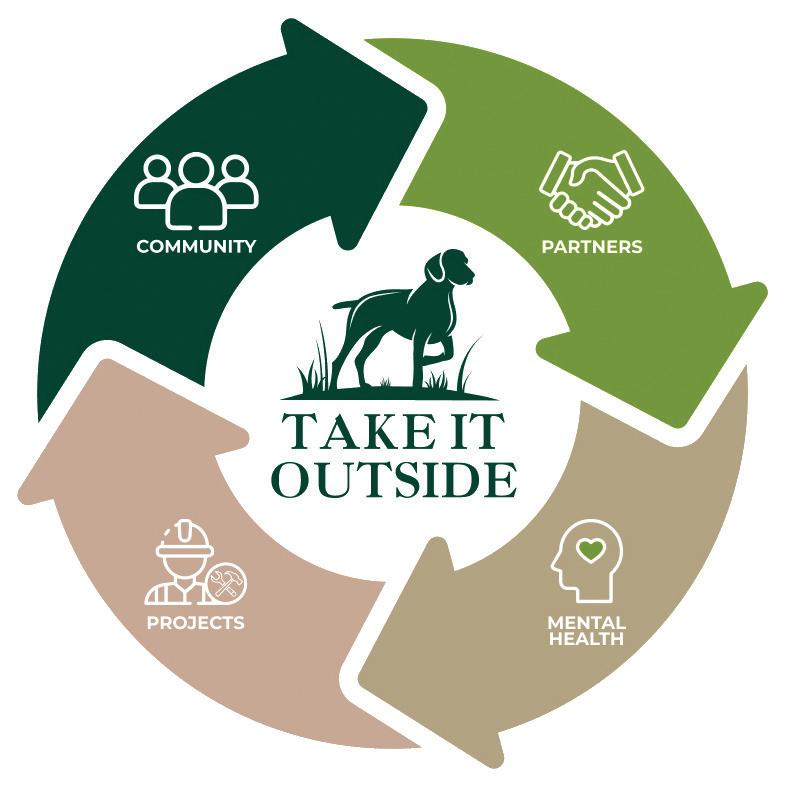
At Take It Outside, we use our strong community ties to organize and take part in service projects that benefit local partner organizations . From revitalizing rundown public spaces to creating new and useful gardens, our projects are designed to help individuals cope with anxiety and other mental health challenges.

A Second Round of Applause for the Newly, Environmentally, Innovatively & Wildly Esteemed Community Members Recognized at SYNKD Live




This winter, Georgia’s Gas South Convention Center hosted our best, proudly non-traditional and uniquely interconnected landscaping exhibition yet (#SYNKDLive2024). After days of ardent discussions, passionate presentations, astonishing discoveries and heart-shaped temporary tattoos, Angelique Robb, the leading visionary behind it all, called SYNKD Live attendees to the main stage for one last huddle before departing toward a better future for our industry.
In what might have been a bittersweet moment, Angelique capped off the event with a celebration, honoring four companies/individuals who raised the bar for the green industry this year. Winners were selected based on our four award categories: Newly SYNKD, Environmentally SYNKD, Innovatively SYNKD and Wildly SYNKD.
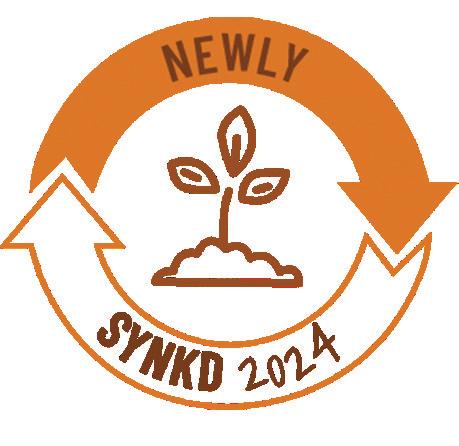
Sponsor Jeffrey Scott Consulting
Description: The Newly SYNKD Award recognizes a new business (open five years or less) that has already made a mark on the industry.

Jason Cultas Chief Collaborator at Huckleberry Enterprises
In December of 2022, Jason founded Huckleberry Enterprises. Coupled with his fine-tuned communication skills, Jason’s expertise as an arborist and horticulturist makes him a five-star advisor to clients and a phenomenal leader to Huckleberry Enterprises’ team members. Operating out of Woodstock, Georgia, the company rises to this sincere slogan: Relentlessly pursuing excellence in Landscape Design and Build, Arboriculture and Maintenance, Irrigation and Drainage.
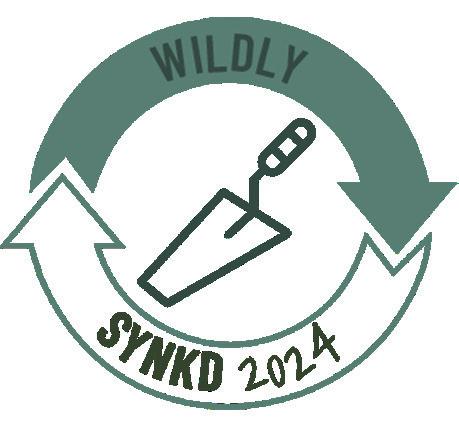
Sponsor SYNKD
Description: The Wildly SYNKD Award highlights both a company and a project creatively incorporating a multitude of hardscaping materials.
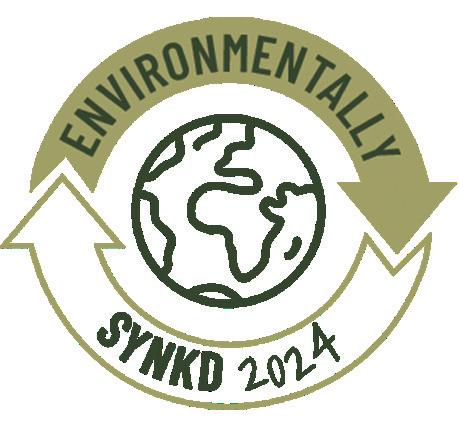
Sponsor Milwaukee Tools
Description: The Environmentally SYNKD Award recognizes a company that has made sustainability an integral part of its business practices.

Sponsor Towa Industries
Description: The Innovatively SYNKD Award recognizes a company or person who invested in technology or solutions to enhance business operations or client services this year.
Winner Soake Pools
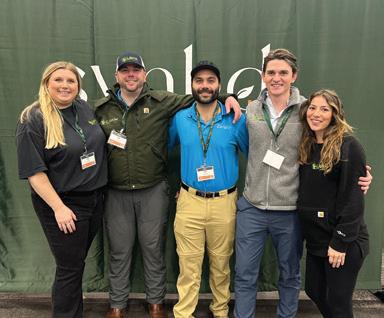
Remember that blue van? Lawn Capital has set a new standard for eco-friendly landscaping. Their innovative residential and commercial maintenance approach boasts zero toxins and zero gas. Read about Lawn Capital CEO Greyson Walldorff’s mission in the 2024 SYNKD spring article “The Rise of Battery-Powered Equipment.” At SYNKD Live, Greyson participated in a debate titled “Battery V.S. Gas: Opportunities and Challenges Weighed Up.” The video is now on YouTube.
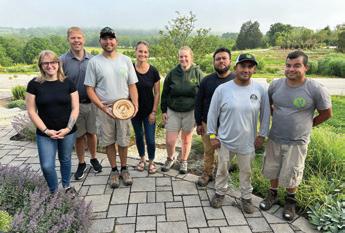
Featured in the 2024 Spring South Issue of SYNKD magazine in an article titled
“A Sustainable Homegrown Cornucopia,” Inside Out Landscape Design has already garnered acclaim in our publication. This award honors another one of their latest projects, Textural Tranquility: an elegant blend of rock garden hardscape, retaining walls, stone step, and lighting, all installed with tremendous finesse.

Did you hear the news from Karen or Sasha at SYNKD Live? Soake Pools, a New Englandbased manufacturer and frequent supporter of SYNKD , recently introduced pre-installed, powered safety covers for their plunge pools. This addition is a game-changer for their customers, making Soake Pools a deserving recipient of the Innovatively SYNKD Award.





Fabián Sanin, Regional Project Manager for Sustainablity & Nature Experiences at Monarch Landscape Companies
Ihave always been interested in how our connection to nature enhances our wellbeing. Growing up in New York City, surrounded by millions of people racing to their destinations in a crowded urban environment, I always found it interesting that everybody tends to slow down in the city's green spaces. We tend to be mindful within a natural environment; they help us relax from the rapid pace of everyday life. These green landscapes are a sanctuary not only for people, but also serve as a food source, shelter and protection for many insect and animal species. These observations were the catalyst for starting my career path toward connecting people to nature around the built environment.

My unique journey in understanding commercial landscapes and their impact on people's wellbeing and ecological connections was enriched during my tenure at Amazon. As a horticulturist on the Amazon GREF team, I was privileged to contribute and collaborate on significant global design/build projects. This invaluable experience heightened my awareness of the importance of creating lush and
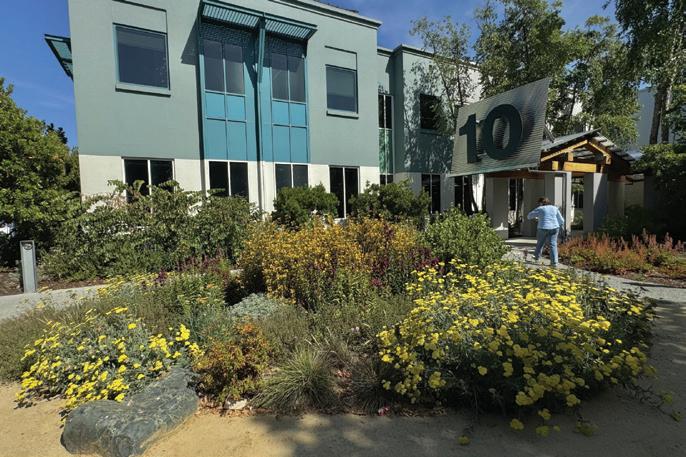
sustainable landscapes and solidified my unwavering commitment to sustainable horticulture.
Having dedicated three decades to the landscape industry, I am now proud to be a part of the Monarch Landscape Companies family, serving as the regional project manager for Sustainability & Nature Experiences. This role is not just a job for me but a platform to continue shaping the ecological future of commercial landscapes—a journey I am deeply passionate about. My focus is to explore creative and innovative ways to enhance people’s encounters within our natural, built environment, utilizing strategies of biophilia, sustainability, biophilic design and biodiversity to elevate the overall landscape experience.
My approach to creating customized tactics and initiatives for our key partners, who have clients with climate-friendly goals, is rooted in a thorough sustainable landscape evaluation. This evaluation allows me to
create a specific document highlighting the opportunities and values of the assessment. By effectively understanding the client's needs and goals, I can create a vision for a high-performing, self-sustaining landscape that delivers greater value to the end user.
I strongly believe that thoughtful landscape placemaking and sustainability can create beautiful, functional, environmentally friendly landscape spaces for everyone to enjoy.

1 Native Prairie Rooftop at Amazon
2 Meta
3 Expedia Natural Area
Fabián Sanin
Regional Project Manager for Sustainability & Nature Experience
Monarch Landscape Companies Phone: (425) 873-4856 www.monarchlandscape.com

As we usher in a new season, the landscape industry continues to evolve, driven by a blend of social shifts, technological advancements, economic changes, environmental concerns and policy developments. These forces shape the way we design, build and maintain our outdoor spaces. Here's a look at some of the most impactful trends and emerging signals that professionals in the landscaping sector should be aware of as we move further into 2024.
Younger generations are showing a renewed interest in gardening and sustainable living, driven by environmental consciousness and a desire for “slow living.” Landscapers can anticipate a rise in demand for edible gardens, native plant landscaping and eco friendly designs tailored to this demographic.

Smart home technologies are extending into outdoor spaces, paving the way for innovations like smart lighting, weatherresponsive systems and automated gardening tools. Landscaping businesses can differentiate themselves by integrating these technologies into their offerings.
The focus on wellness and mental health is shaping outdoor living spaces into sanctuaries that promote relaxation and mindfulness. From meditation gardens to outdoor yoga studios, there's a growing niche for professionals specializing in wellness-oriented outdoor environments.
Holographic projections for outdoor entertainment are on the horizon, promising to transform backyards into immersive theaters or gaming zones. This technology presents an exciting opportunity for landscapers to collaborate with tech companies and incorporate these features into upscale projects.
Advancements in AI-driven gardening robots capable of managing a garden's needs independently are on the rise. Landscapers should stay informed about these developments to offer maintenance
packages that include robot-assisted gardening services.
For businesses navigating the landscape industry's complexities, Robin Champ at LBL Strategies offers expert guidance. With experience as the former chief of the Enterprise Strategy Division in the U.S. Secret Service and currently vice president of strategic foresight at LBL Strategies, a veteran-owned firm specializing in strategy development, Robin provides valuable insights to help businesses thrive. Reach out to Robin at LBL Strategies for tailored advice on trends, strategic planning and strategy management to shape your business for success in this dynamic field.

CONTACT
Robin Champ
Vice President of Strategic Foresight at LBL Strategies www.lblstrategies.com




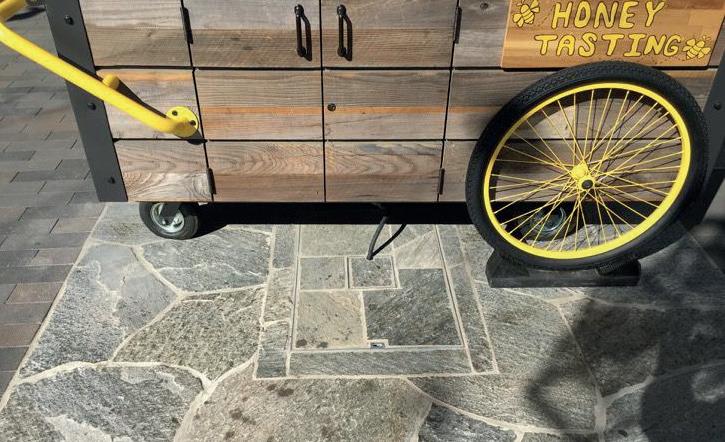






Angelica & Matt Norton , Landscape Designers & Owners of Open Envelope Studio , Discuss How Elevation Can Take a Space From Public to Off Limits
Our recent articles have covered the initial steps of gathering information, imagining a concept and assessing constraints and opportunities in landscape design. This installment will look at how to make design decisions informed by the site’s topography.
Elevation changes hold subliminal implications. For instance, due to their prominence in the landscape, elevated spaces feel more public, invite exploration, promote gathering and facilitate expansive views like a skyline or greenbelt. Conversely, sunken spaces feel somewhat hidden and protected, perfect for intimate programming, with a controlled view of the immediate surroundings. How the grade is managed has subtle messaging as well. Gradual grade transitions foster connectivity, while abrupt drops create
distinct spatial divisions and insinuate “off limits.” Understanding these effects can inform designers on the implications of their decisions and help ensure that their choices support their concept narrative.
Other design decisions regarding negotiating changes in grade can be driven by more logical criteria. Adhering to standard rules of thumb can create constraints and further narrow down decisions. A great way to start exploring spatial relationships is to establish the finished floor elevation (FFE) and adjust subsequent spaces by increments of six inches, which can provide an underlying unity to the design and help ensure comfortable step heights when connecting areas later in the process. Try to keep walls below 30 inches to avoid triggering the need for railings by code. We typically follow a six-inch rise and 14-inch run for stairs. Limiting steps to groups of three avoids the

need for a rail and creates a visual rhythm without overwhelming users with an imposing mountain of stairs.
Depending on the measurement, the difference in height of two spaces can also suggest the possibility of specific design opportunities. For instance, 12 inches can divide two spaces while still providing a shortcut for occasional use. Eighteen-inch drops are great to double as informal seating. Thirty-inch differences could double as counter space. And lastly, a drop of 36 inches could allow an opportunity to integrate a counter or railing.
It’s easy to come up with a collage of cool ideas, but designs go to the next level of unity and narrative by using the concept as an anchor and rules of thumb to distill and make decisions. We’d like to get more specific in our next few pieces to continue to look at more constraints like materiality, constructability and plant selection and placement.
Angelica Norton, ASLA
Owner of Open Envelope Studio LLC
Phone: (512) 925-0155
Email: angelica@openenvelopestudio.com www.oes.design



INSIDE INSPIRATIONAL WORKS
PAGE 27 The Max Collaborative: Enlivening the Denver Skyline |
PAGE 32 Dr. Damon Abdi, Ph.D.: Seeking Shade | PAGE 35 D’Asign Source: Embracing Opulance | PAGE 39 Alan Jalasjaa: Beyond the Heat





In a world with artificial intelligence, people are often suspicious of renderings that look like this. To some, the organic forms and divergent conditions for plant life seem like clues indicative of an unfathomably costly or unusable design. Yet, as One River North residents now know, this mold-breaking living landscape is more than just verifiably authentic. The existence of this biophilic Denver building symbolizes nature breaking through urbanism, technological progress in architecture and synergy between optimistic and experienced professionals.
The Max Collaborative, the developers behind One River North, viewed this project as an opportunity to go above and beyond. Placing themselves in the headspace of a future resident, they ventured to find a way to create a living environment connecting beyond the confines of the apartment space. This train of thought led them to MAD Architects, an international firm headquartered in Beijing, China, known for dynamic, biophilia-centered work.
“I have always been inspired by [MAD
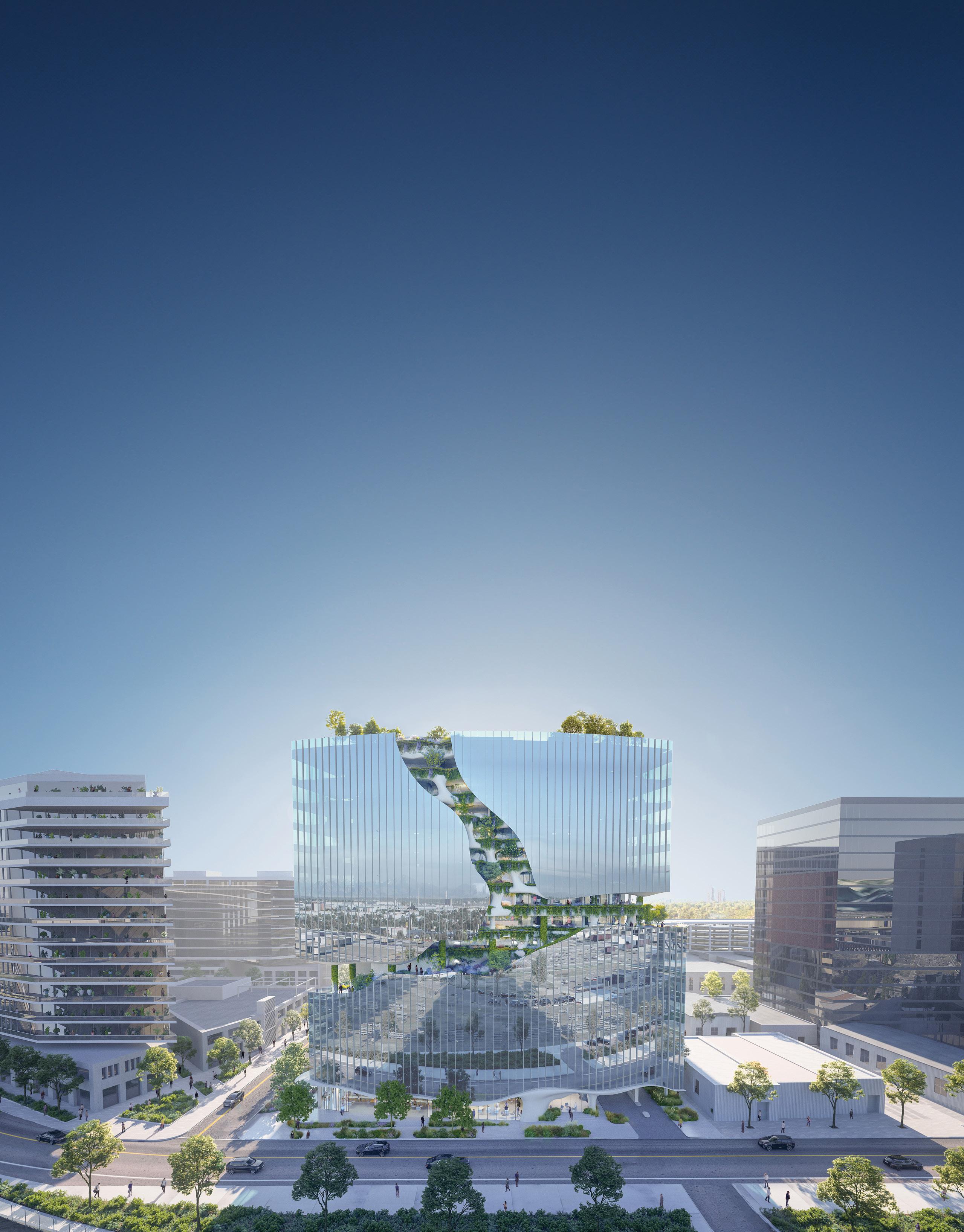
Architects] and the organic nature of their architecture, the way they blur the line between built environments and nature,” says Kevin Ratner, co-founder and managing partner at The Max Collaborative. “People are generally happier when they are around nature. We chose MAD because we wanted to do an architecturally stunning, high-rise apartment complex, but other than that, we knew we would not need to give them much direction. We love what they do.”
After completing the first phase of the
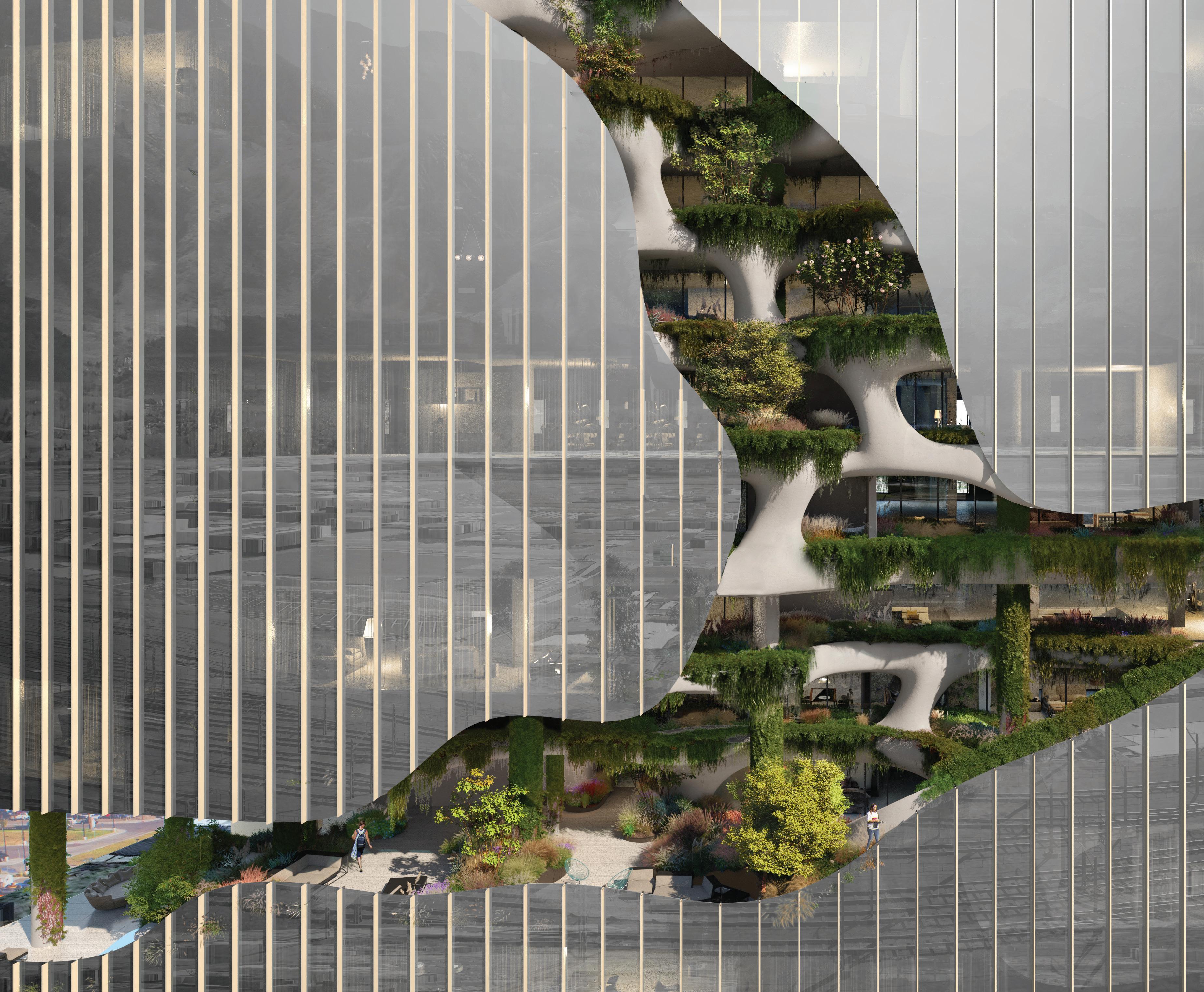
design and architectural massing process, The Max Collaborative brought on Davis Partnership, a multi-disciplinary architectural corporation based in Denver, to assess if the concept was technically viable. Overall, it was. Aside from some curvature tweaks, location-based enhancements to the narrative and a revised plant palette echoing the Colorado wilderness, much of the original creative work carried through the remainder of the project.
“The concept was strong, and our initial focus was simply to educate the owner and design architect as to what this green space would be relative to some of those early renderings,” says Jeff Stoecklein,
senior landscape architect at Davis Partnership. “When you look at Denver, the city is sandwiched between a lot of different biomes or natural ecosystems. We leveraged that. Subtle moves occurred throughout the design process where Davis Partnership expressed that to get the effect of landscape that we were looking for, we needed to play with things like the wall forms and soil depths.”
From the 6th floor up, the canyon-like rift lines follow the environmental transitions experienced backpacking from Colorado prairies to alpine meadows. Each floor has two private balconies, and none look the same. The outdoor space is set to
impress visitors, season by season, year by year, despite challenges like waterproofing, irrigation, craning specimen trees into place or the northwestern orientation of the facade.
“We had to get very detailed in our solar analysis before we selected any plants,”


says Jeff. “Some communal areas are recessed 20 feet behind the building facade and getting pure shade. Other parts of that deck may get four to six hours of sunlight. It was important to look at each plant location in that solar analysis. Then, maybe equally important, was recognizing the unknown. We know, because of the building mass and all those curvilinear plaster forms that you see in the rift, that the canyon will experience wind tunnels and a variety of microclimates. Because of that, we were very clear with ownership that some plant mortality may occur. It is just the nature of what we do, but it may be at a higher rate here based on these factors.”
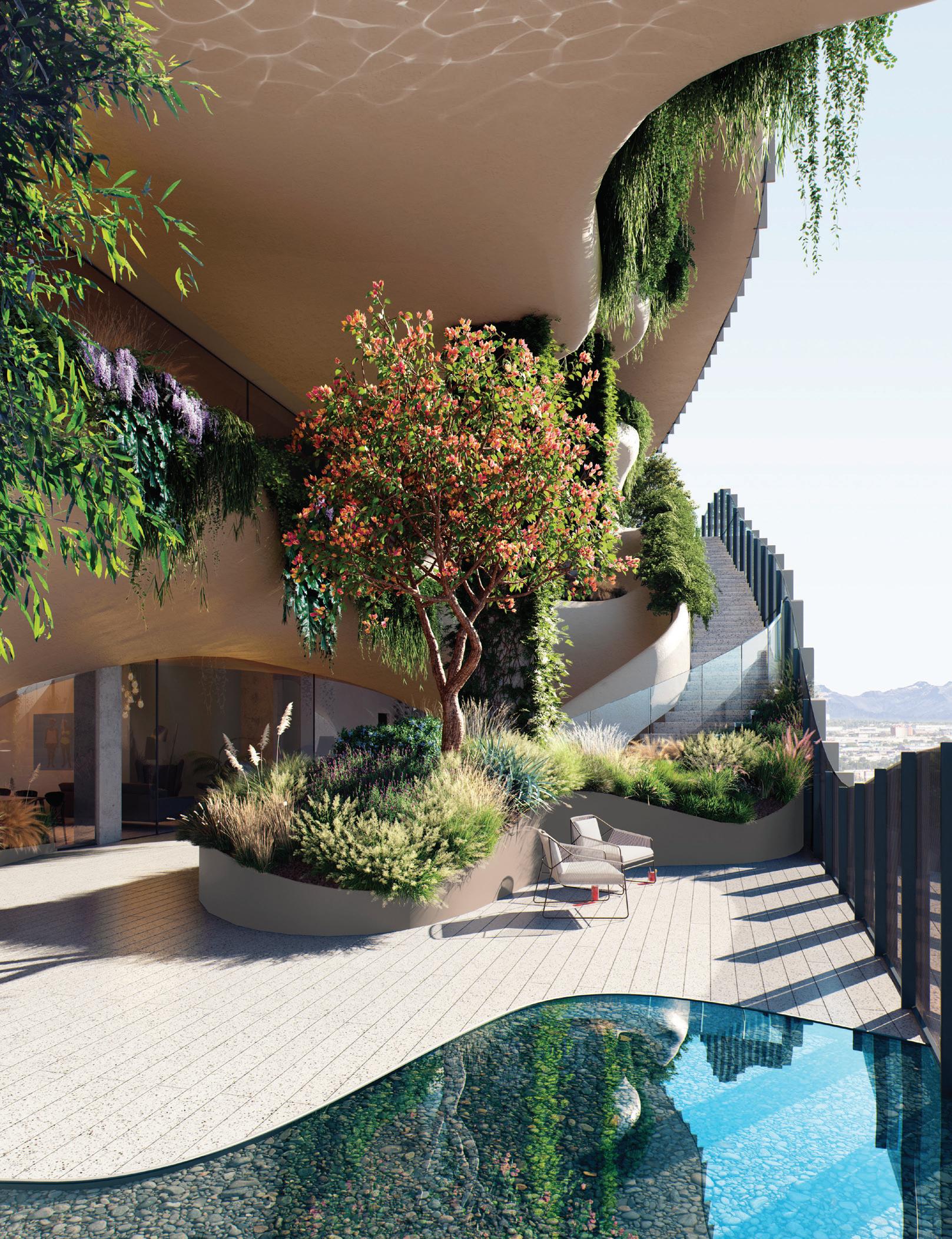

Irrespective of the vexing plant survival odds, Davis Partnership was committed to providing the clients with the resources needed to foster and maintain this resilient intensive-assembly landscape. They discussed long-term budget considerations (irrigation inspection, soil moisture checks, seasonal soil sample tests, etc.) to smooth out any postinstallation issues and bolster the health of the green space. Jeff then consulted a third-party green roof professional and a Colorado State University horticulture professor to perform extensive reviews on the project. Soon, with the help of the same CSU professor, the green roof professional and a Davis Partnership

irrigation designer, the team will create a final plant maintenance plan the owners of One River North can pass on to any landscape maintenance teams they work with in the future.
Greenery is not the only aspect of this canyon worth remarking about. Even though it came together swimmingly in the end, the structure was a sticking point for Kevin from The Max Collaborative in his effort to assemble a phenomenal, experienced and enthusiastic team.
“If you show a contractor rendering of this building, they will either think ‘no way’ or ‘that is going to cost a lot of money,’” says Kevin.
We had to go through a demystification process. We would explain that beyond some exceptions, most of the techniques & materials needed were very traditional.
Joining the One River North team during the first of two preconstruction years, Dan Tuttle, senior project manager at Saunders Construction, brought with him over 15 years of experience and an excitement to take on new challenges. While he admits to some skeptical thoughts before his involvement, his vigor for the project now points to how advanced, collaborative and thorough the process was.
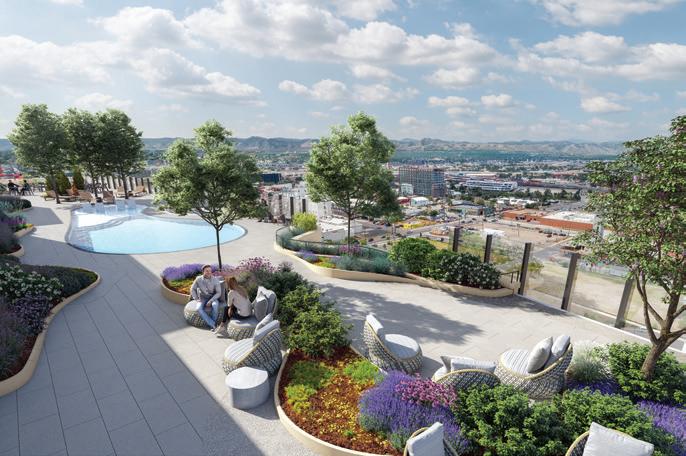
“We used a lot of 3D laser scanning on this project,” says Dan. “It is some of the most up-to-date laser scanning technology available, and we used it for quality control on the concrete planter walls that undulated up, down and sideways. You can scan the concrete walls with an iPad or a drone. Before, it took 24 to 48 hours for someone to stitch the data together and tell you where you went wrong. Now you can compare that laser model to the architect model within an hour.”
Jeff tells us this project would have been impossible without software like Rhino and Revit. These tools allow for more curving forms and quick, accurate handoffs from architect to landscape architect to project manager. Dan explains
that this precision and communication between team members made implementing unusual installation techniques, like the One River North plaster chip system, only moderately challenging.
“The plaster system is what gives the canyon that organic shape,” says Dan. “We call it the chip system. The reason is that the squares look like potato chips when they arrive. The chips are five-by-five squares of chicken wire, tie wire and a pencil rod, and they come in all these funky shapes. Each chip has a number on it. You piece them together in the field. That is also how you build the rocks at Disneyland.”
One River North exemplifies the adage “If there’s a will, there’s a way.” In this context, however, it is more fitting to say, “If there’s a will and an experienced team of professionals committed to overcoming challenges, a viable solution is likely.” Expertise in roofing top decking materials (pavers, pedestals and waterproofing systems), horticulture, warranties and building codes were instrumental in the implementation phase. On a fundamental level, however, the ache to try something new was what triggered the domino effect that led to this bold new addition to the Denver skyline.
Marvin Roca Jr.
PR for The Max Collaborative Email: marvin@therosegrp.com www.onerivernorth.com
ENTITIES INVOLVED WITH PROJECT
MAD Architects, Saunders Construction, Davis Partnership, The Max Collaborative, Uplands Real Estate Partners, Wynne Yasmer Real Estate and Zakhem Real Estate Group
PHOTO CREDITS
©One River North (Renderings) ©Davis Partnership (Renderings) ©Kairoi


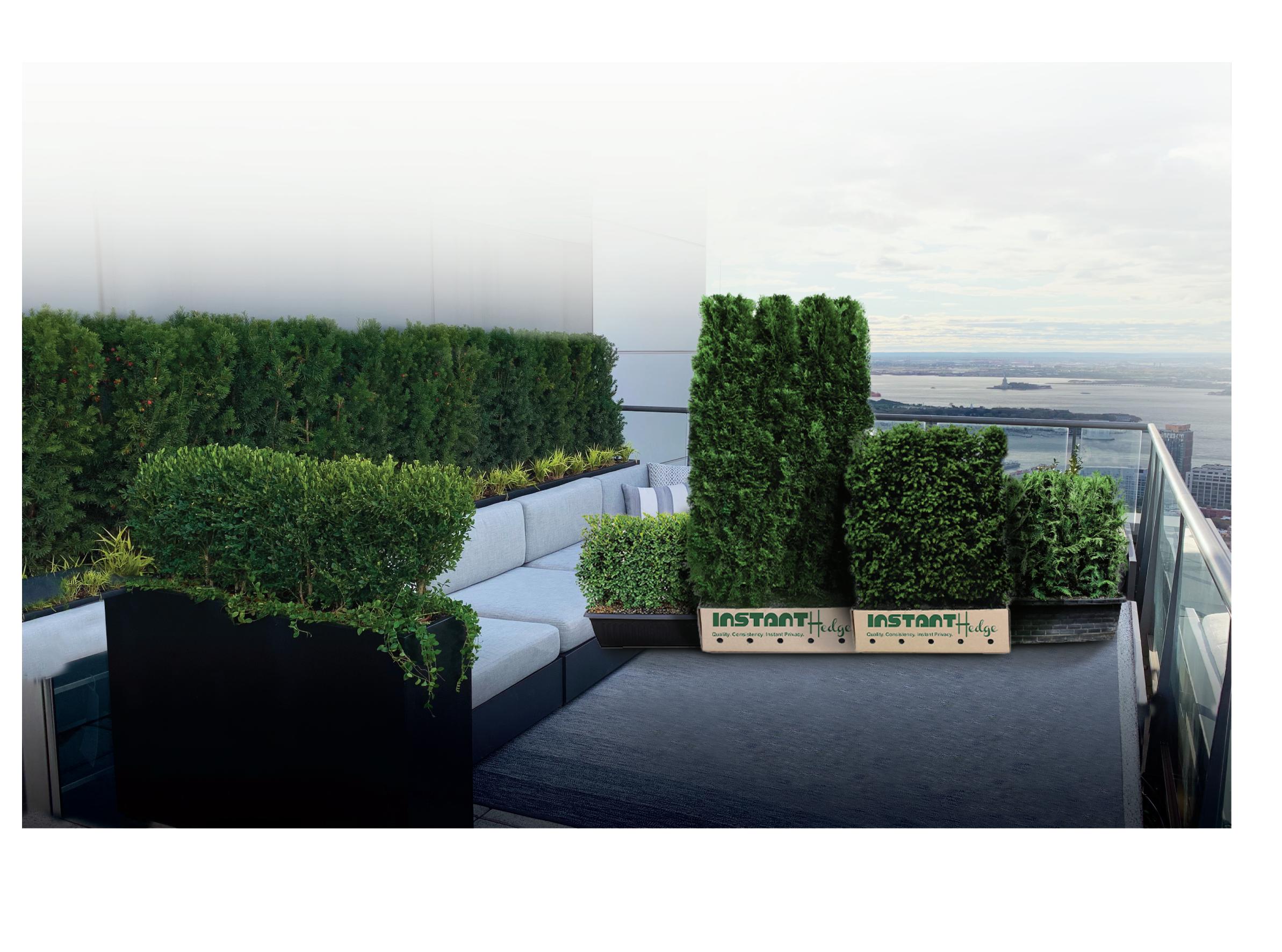

As summer’s heat approaches, we warmly welcome the longer days bound to be filled with outdoor gatherings. We fondly recollect thoughts of being at a backyard barbecue, among a crowd at a concert or by the pool; however, reality sets in to temper our expectations. We may find ourselves sweltering in that summer sun as we seek shelter from the solar rays. The canvas of concrete and steel in urban environments amplifies this heat (the urban heat island effect), burning out people and extinguishing their enjoyment of summer. In cities across the country, people find themselves in search of shade as they travel between buildings. Taking rest in a location secluded from the sun, they may long for a life where the concrete jungle yields to a more natural landscape. For those trying to catch their breath from the summer sun in the city of Charlottesville, Virginia, the redesigned landscape bed on the Historic Downtown Mall was a breath of fresh air.
This bustling pedestrian street, barricaded by bosques of trees lining the cafes, shops and small businesses, is in many ways the first impression visitors have of Charlottesville. It is in this historic outdoor hallway that many locals find themselves going for a night out on the town or to dine-in at their favorite
restaurants. In such a high-activity area, the existing landscape could not keep up.
“We had an area that was in need of love— poor soil quality, tough condition,” says Landscaper Ben Schiner. Other members of the city landscaping team mentioned an abundance of weeds and lack of purpose for the space.
Taking lead in designing the site was Theo Teichman, landscaper and project lead designer, who sought to execute a vision to support local people and plants. “This project needed to be explicitly native in response to civilian requests and to challenge ourselves to break the mold,” he says. “We didn’t want to just pick plants that everyone already knows and uses, but wanted to show the public some plants that they might not be familiar with and can find relatively easily around the area. We wanted to show that native plants can be beautiful and that urban landscapes can look different than people normally expect. It was also a great opportunity for us to learn more about new plants and to be able to trial some we haven’t used in these kinds of conditions before.”
With a clear vision to develop a native landscape in the heart of downtown Charlottesville, this team turned this dream
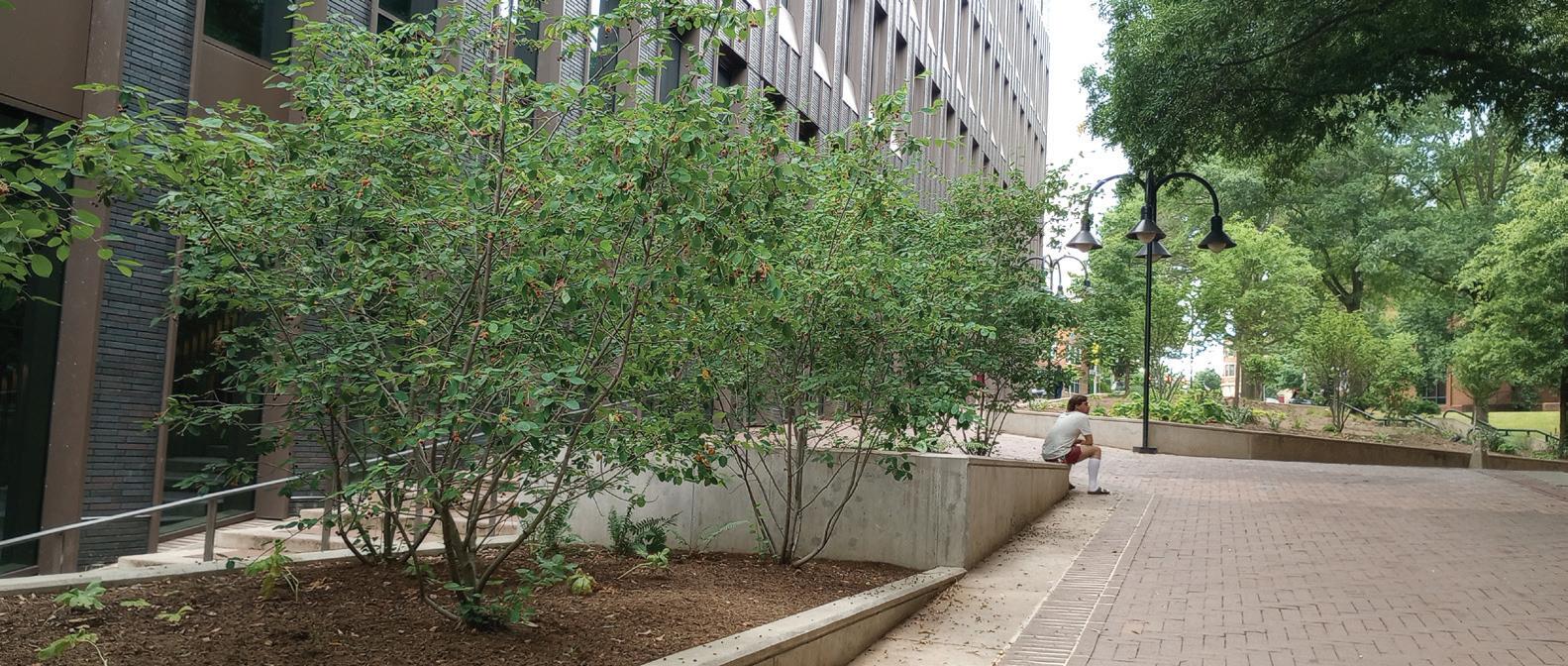
into reality. Theo succinctly states, “We’re not restoring an ecosystem, we’re restoring a connection to place.”
Fully understanding the site was the first step. “We started by documenting existing site conditions, frequenting the bed during all seasons to remove weeds,” said Theo, pointing out the young oak trees that in future years will cast some much-needed shade on this particularly hot site. The pavement and reflection from the glass makes this site uniquely hot, despite being shaded by buildings. Challenges to consider included using natural solutions to common problems in the landscape.
“One of the big goals was managing erosion and controlling weeds and doing both of these using native plants rather than more conventional approaches,” explains Landscaper Kathleen Guevara. “Improving biodiversity was important for this unique environment,” adds Ben. “We wanted to also provide a habitat for pollinators and other insects. One of the challenges is that many plants normally used for pollinator gardens might prefer full sun or wet soils, neither of which we had.”
Plant selection was purposeful. “Since we are working with the public’s money, we want to make sure these plants are successful,” says Theo. “One of the challenges was finding plants that we would be confident would survive the many different conditions this garden might throw at it.”
The plants selected included locally acquired native species, such as wild ginger, Christmas ferns, mayapple and wild strawberry for ground cover from land owned by Parks & Recreation. “We looked to wild sites we thought were similar in terms of terrain and environmental conditions, such as clearings, rocky boulders and open forest floors, because we wanted to test these plants in the urban shade garden,” explains Theo. He expanded the scope to cast a wider net for new plants to trial. “While the Amsonia is not a Virginia native, it is native to the southeast and we found it would provide similar benefits as similar
endemic plants in a Piedmont woodland while being easy to source and having wonderful and very visible fall color interest,” he says.
Indeed, this mix of southeastern selections provided many appealing features to the landscape. The site boasts a bounty of blooms. “The burgundy of the penstemons adds a spark of color and it is tall and showy” says Landscaper Keith Cecchinelli. Kathleen adds, “The wild pinks are wonderful. They add a burst of early spring color that I hope will brighten everyone’s day when they come down here.”
Form and foliage were also heavily considered. “The goatsbeard is a great, tall element for a shade garden with lots of ecological value” says Theo, highlighting this plant’s height.
The plant installation process was costefficient and effective. “For such a large bed, it would have been vastly beyond the scope of a municipal budget to fill the whole bed with plants,” says Theo. “Plants were installed in pockets to attract interest but would spread and distribute over growing seasons. Based on the reference ecosystem, plant clumps were distributed and feathered rhythmically across the bed to create a sense of depth and to naturalize the bed. Not only does this garden evoke the character of the Piedmont open woodland, but because of this naturalized character, the garden is lower maintenance and lower budget for bigger impact.”
Tying multiple seasons of landscape interest together with a long-term vision for growth, Ben explains, “All the ground covers will fill in nicely and feed the soil. The wild strawberries will get blooms and the little fruits will give bursts of color to what was previously barren soil.”
The team took on unusual considerations germane to this landscape as well. “We wanted to try out Iris cristata because we had read it has the capacity to be resistant to dog urine, which was a big issue at this garden,” says Theo. “We used it as border planting to create a buffer for the other plants.” Suffice it to say, biodiversity considerations in the urban environment may include resilient landscapes for our four-legged friends.
Taking swift action was the first step says Theo. “It was a pretty quick timeline, relatively speaking,” he explains. “We started design in February/March and began the first round of installation in April.” But the garden, much like the natural environment it seeks to emulate, is a living, breathing project. “The goal is to monitor plant performance and continue to augment with plugs, seeds, and transplants through late summer/ early fall,” he adds. “We are lucky to have such a good opportunity to trial new plants and planting strategy.”
Already, the citizens of Charlottesville are appreciating this downtown addition. “There’s a group of people I see every day hanging out on the benches near the bed,” says Theo. “When we were installing and coming by to do maintenance, some of them came up to me and expressed that it’s really looking better, and they appreciate and notice the work we’re doing. This impacted me because they are the citizens experiencing this place every day, and if it makes a difference for them, then we’ve done something good for our city.”
This installation demonstrates the power of revitalizing urban landscapes and providing a service to the city, an expanding effort to make a difference no matter the scale or scope.
Just as important as cultivating a new landscape is cultivating a team of dedicated individuals. Theo supported this sentiment by highlighting the collective effort involved in this installation. “This was really a team effort,” he says. “Just like plants, people also work together and each of us brought our skills and perspectives to make a really wonderful space. Ben and Kathleen had the original idea that this neglected bed would be perfect for the native garden the citizens were asking for. Ben and I did the initial site analysis. Keith helped a lot with drafting the
base plan. We all went to gather and propagate the wild plants. Kathleen and Randy [Dean] have a good eye for design and gave second opinions and feedback on layout and design.”
We all have investment in this place, & it makes the final profuct so much better.
This installation represents a solution to evading the summer sun that many encounter in cities across the country. Creating an oasis in which citizens can seek shade and transporting them to a natural area that departs from normal city life may seem impossible. For the community in downtown Charlottesville, this project turned that into a reality. By bringing together public interest, public support and passionate people, this installation demonstrates the power of teamwork in making a difference in our communities.
Dr. Damon Abdi, Ph.D.
Assistant Professor of Landscape Horticulture at LSU Ag Center
Email: dabdi@agcenter.lsu.edu




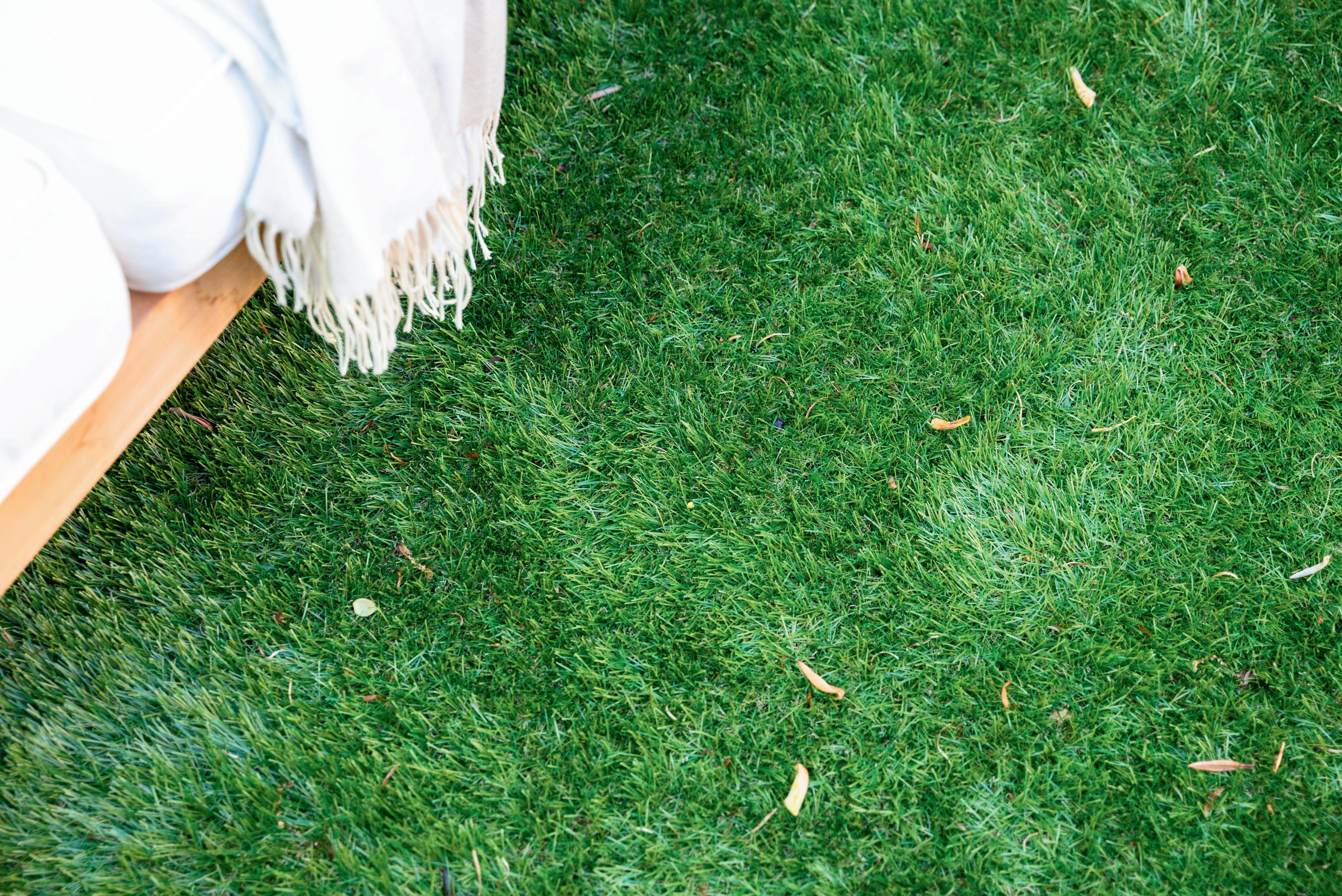



Luxury living has transcended the confines of indoor spaces, flourishing in the great outdoors. The days of simply having fine materials and modern features are behind us. Today, there’s a quest for creating an oasis akin to an all-inclusive resort, where every need is effortlessly met. The Gulf Front Estate by D’Asign Source, a paragon in luxury design and construction, epitomizes this trend in their latest project in the Florida Keys.
Spanning a breathtaking 23,913 square feet, Gulf Front Estate residence showcases some of the most meticulously crafted architectural details in the region. Yet, the true essence of luxury is embodied in its outdoor living spaces. From a lazy river and swim-up bar to four distinct pools, a putting green and a cozy fire pit, the estate offers an experience
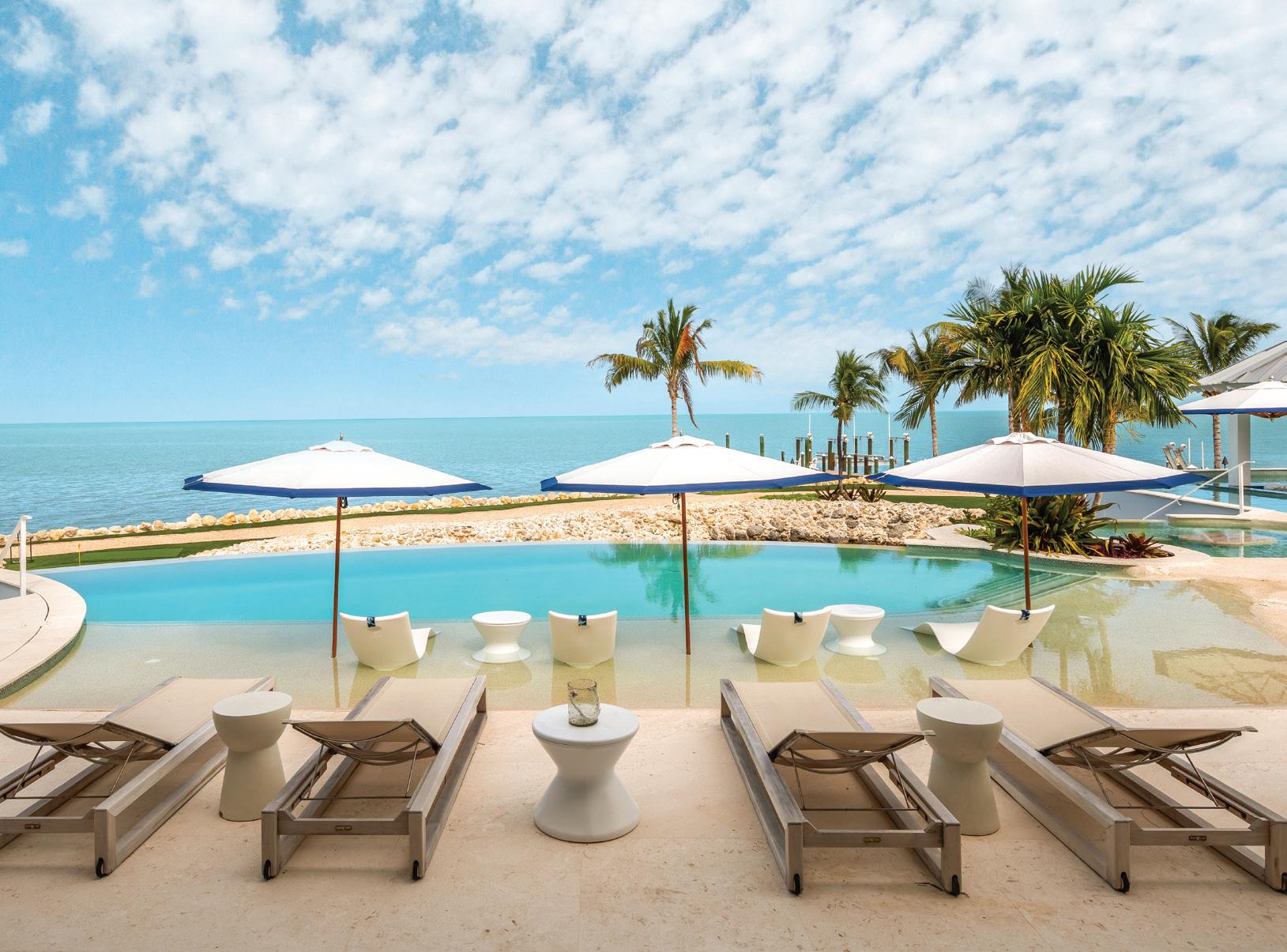



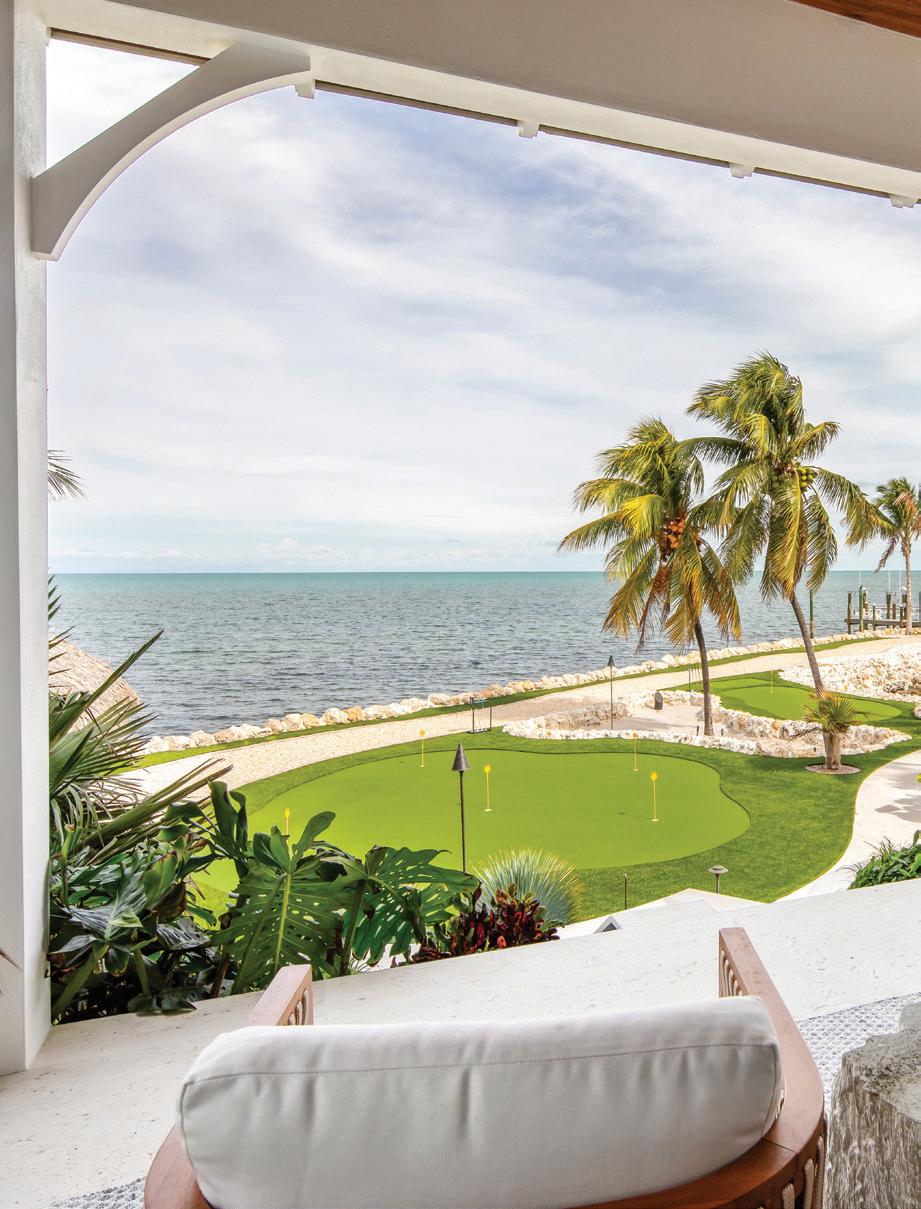


that rivals the finest luxury spas and hotels worldwide. Tropical plants seamlessly blend with hardscaped areas, providing shade and visual intrigue to the lush outdoor rooms that tantalize the senses with rich aromas and vibrant colors.
In an exclusive interview with Project Manager Nicholas D’Ascanio, we delved into the creation of Gulf Front Estate.
Conceived as a resort-style retreat catering to both family and business needs, the estate’s design allows for multiple guests to enjoy privacy in separate quarters, all centered around the magnificent main pool area. Elevated six feet for hurricane protection, the pool area is a marvel of engineering, with nearly all surfaces pile-supported and pool equipment discreetly hidden to preserve the aesthetic harmony.
The outdoor space is a masterpiece of lush, functional design. Eschewing sterile simplicity, it embraces the tropical

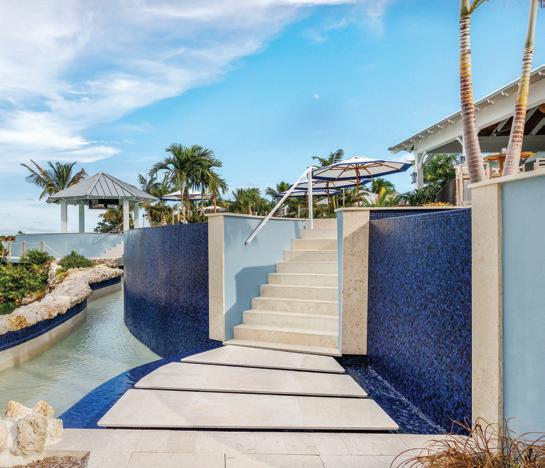
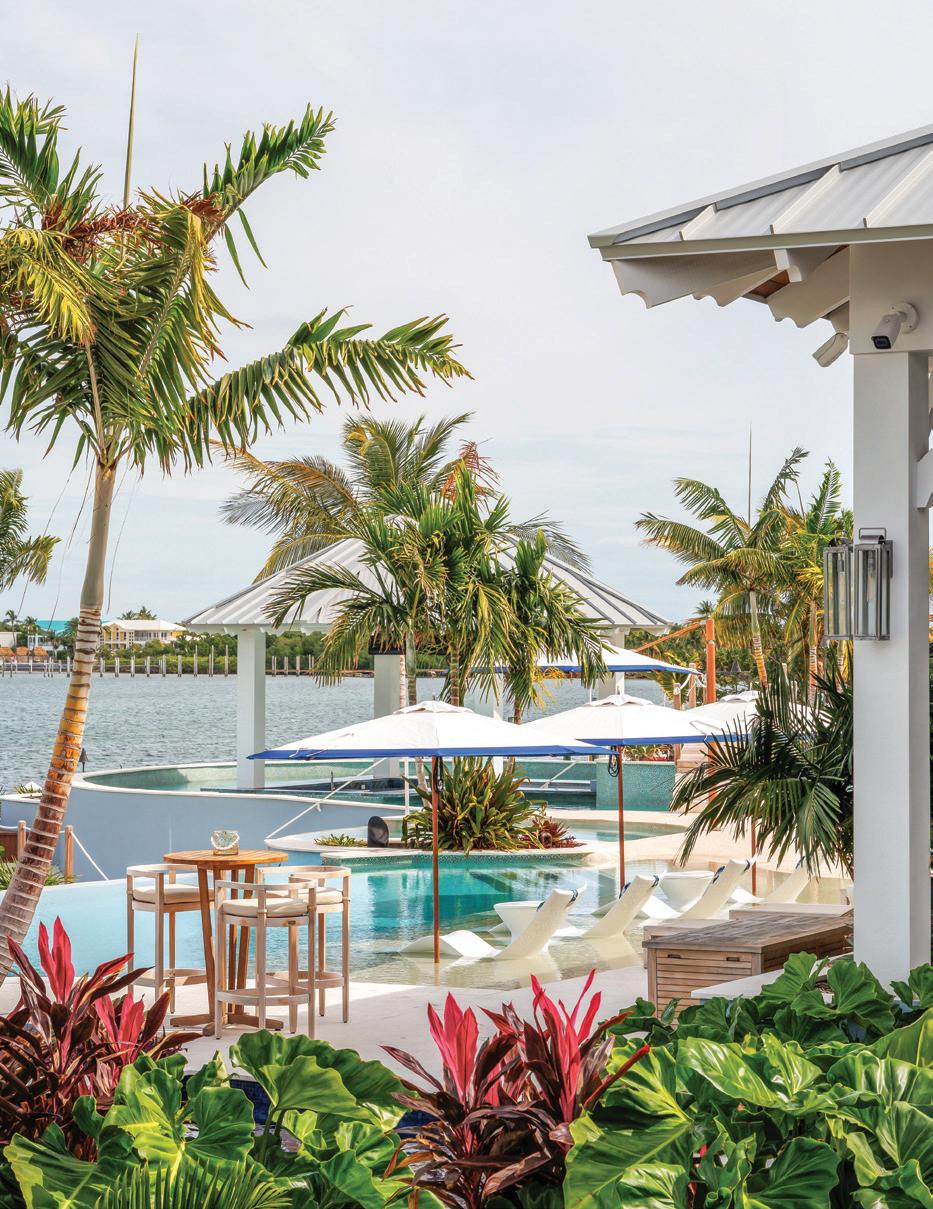
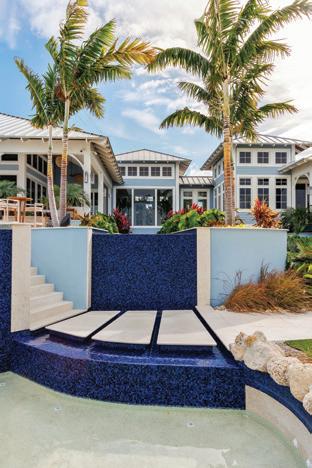
essence of the region, transforming every inch into a lavish, integrated retreat. The inclusion of modern technology is subtle, yet impactful, with hidden amenities like band plug-in areas and powerful generators ensuring the estate remains ultra-modern without compromising its serene atmosphere.
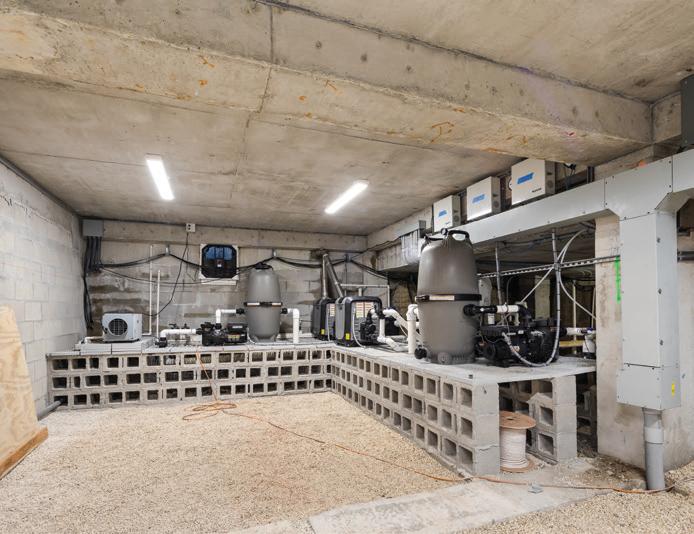
One standout feature is the transformation of an old excavation site into a stunning waterfall and pond, showcasing the design team’s ingenuity.



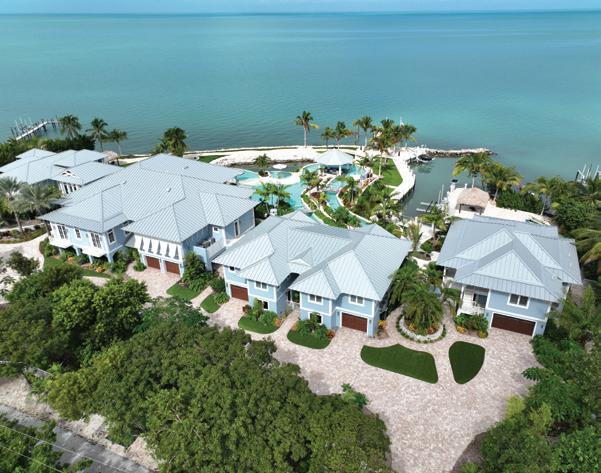
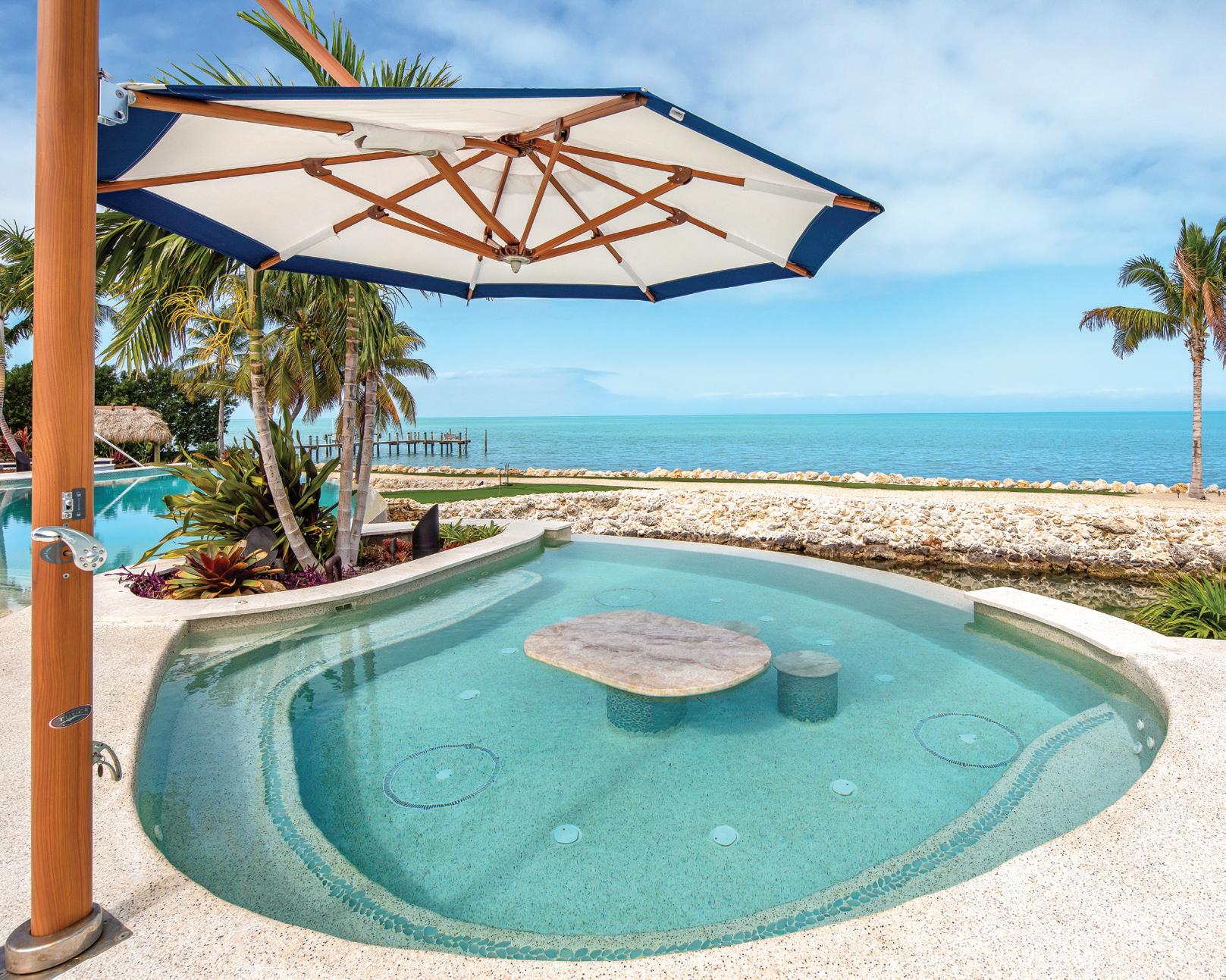


High-quality, locally sourced materials, such as natural stone, ensure durability and longevity, while palm trees, chosen for their hurricane resilience, enhance the tropical ambiance. Many of the plants are custom-selected from D’Asign Source Botanicals, ensuring they are perfectly suited to the environment.
Maintaining such an opulent estate in a salty, coastal environment presents unique challenges. Materials like stainless steel are favored for their modern appeal but still require diligent maintenance to withstand the elements. The roofing material, the only one with a coast-tocoast warranty, exemplifies the careful selection process to ensure durability against salt water.
Attention to detail is evident throughout the estate. Striking blue mosaics, sourced from industry leader Ray Corral, adorn the pool areas, while the Pebbletec surface of the beach access pool mimics the look of sand.




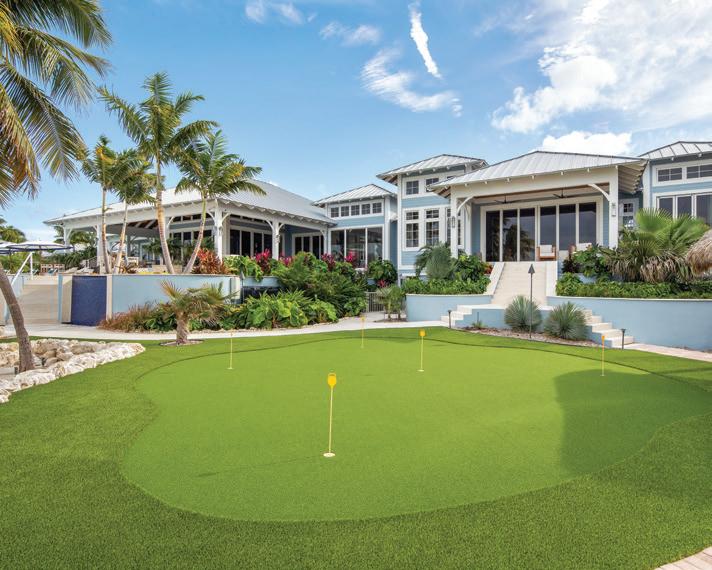
Artificial turf, chosen for its eco-friendly and practical benefits, spans the property, addressing water limitations and enhancing the landscape.
Designing Gulf Front Estate demanded creativity and a deep understanding of
the local environment. From incorporating salt, wind and droughtresistant plants to designing elevated outdoor kitchens, every detail was meticulously planned. The result is a testament to the expertise of the D’Asign Source team, creating a harmonious blend of luxury and nature in this unparalleled outdoor living space.
D’Asign Source
Marathon, Florida
Phone: (305) 743–7130
www.DAsignSource.com
www.DAsignSourceBotanicals.com www.CoastalSource.com

Discovering the Rich Social, Cultural & Immediate Benefits of Sauna with Alan Jalasjaa
These days, everywhere you turn, you hear celebrities touting the health benefits of sauna.
Medical professionals are as well—including Peter Attia, a physician and author of The New York Times bestselling book Outlive: The Science and Art of Longevity . When it comes to sauna and increased longevity, says Dr. Attia, “The burden of evidence is so strong, it’s becoming hard to ignore … When you look at the largest published series on this, you see a benefit in all-cause mortality—a relative risk reduction of 40 percent and an absolute risk reduction of 18 percent. Those are ridiculous numbers.”
It makes sense that those numbers are turning heads. As a Canadian of Finnish descent, I grew up with sauna (a term we use less as a noun and more as a reference to the activity or experience). My summers were spent at my grandparents’ cottage in the Kawarthas, a two-hour drive north of Toronto, and where sauna was a family affair. Now, as a self-described “sauna evangelist,” a sauna builder and the host of a podcast dedicated exclusively to sauna, I’m thrilled to see so many people discovering the wonders of sauna for the first time.
But, I am concerned that some of the new converts are getting into it for the wrong reasons, i.e., focusing too much on the
long-term health benefits and missing the bigger picture.
I’ll tell you why.
First, there is so much more to sauna than just the health benefits.
In Finland and other Nordic countries, people have been using sauna for thousands of years—long before the advent of modern medicine. It’s likely that the Finns always understood the health benefits of sauna without requiring medical studies to confirm it.

But would Finns still sauna if there weren’t any health benefits? Absolutely. The reality is that Finns were, and still are, far more focused on the social, cultural, spiritual and meditative benefits of sauna. Finns understand that sauna provides a special kind of solace from the demands of daily life and a particular type of shared space—a place where
barriers are broken down and new and old relationships are nurtured.
It’s also important not to focus solely on the stats indicating the long-term health benefits of sauna. After all, research tells us that abstract, future-looking prognoses are a terrible motivator for self-care activities like diet, exercise and sleeping. Why would sauna be any different?
When it comes to sauna, there are so many tangible benefits that give you an immediate payoff in the here and now. Sauna use gives you a significant release of dopamine (a neurotransmitter) and beta-endorphin (a neuropeptide hormone), both of which instantly make you feel good and improve your energy, mood and pain tolerance. After a sauna session, most people report sleeping like a baby, having less anxiety and stress and having a greater sense of wellbeing than they did before. There’s also the communing with nature that happens when using an outdoor sauna, especially if there’s a nearby body of water to plunge into between sessions— and the sense of community around enjoying some post-sauna beverages and snacks.
Then, there’s the theory that sauna just makes people happier overall. Case in point: Finland has been named the happiest country in the world for seven straight years by the World Happiness
Report. There are also three million saunas in Finland for 5.5 million people. Coincidence? I think not. (OK, maybe having a really good social safety net helps, too, but still.)
The point is: there are so many short-term benefits to sauna use and studies show that those short-term perks are what keep us coming back for more, thus enabling us to enjoy all those long-term health benefits that sauna provides in the end.
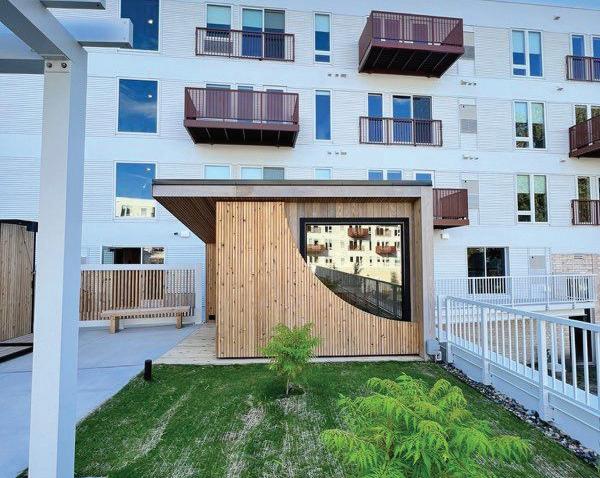
For these reasons and others, the demand for home-based saunas has seen a dramatic increase in the past five-plus years and will continue, thus creating a unique opportunity for the landscaping community.
In the wake of this emerging global trend, landscape designers and contractors need to understand and accept that more and more people are viewing their private yards as a sanctuary, not just a place for flipping burgers on the weekend. They want to feel invited into this special space, whether it’s for serenity and calm or social connection with family and friends. A well-designed space with a quality sauna installation can accomplish both and much more. Homeowners will cherish what they have created and those same friends and family will want to visit time and time again. What could be better for growing a business than to have customers that are the envy of the neighborhood?
By having the ability to incorporate unique features, like a sauna, the valueadded proposition goes way up, resulting in more compelling projects that become part of your brag book.
Need convincing on how including saunas in your offerings can translate into a healthier bottom line and better clients? Go ahead and send me an email at alan@kivia.ca and let’s chat.
Portions of this article first appeared in The Globe and Mail . Alan Jalasjaa is the Canadian representative of Sauna From Finland and the host of the podcast Kivia: The Spirit of Sauna. Email: alan@kivia.ca kivia.ca

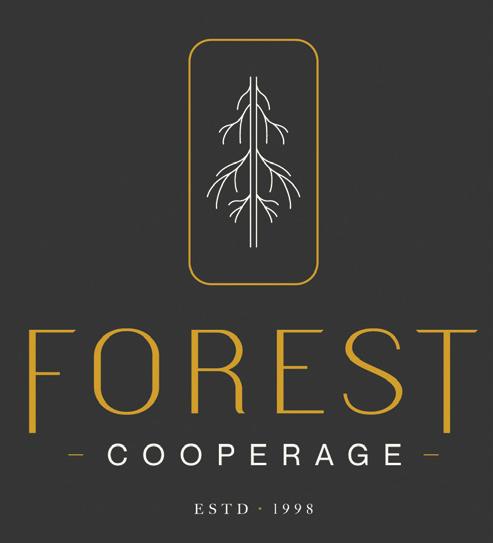



INSIDE RAISE THE BAR
PAGE 42 An Insight Charcuterie Board Part 2 | PAGE 46 Franco D’Ascanio : Defying the Elements | PAGE 49 Ian Yarian: Smart Irrigation
Help yourself! Grab Some Slices of Information. Then, Access Full-Length SYNKD Live 2024 Presentation Videos By Scanning the QR Code

There are so many improvements that are made just by making and adapting to little changes. Noise pollution, all these different things that we can effectively change and make a vast improvement with. What we need to do is a better job of letting the public know that we care … and that we are going to do what we can to make the world a better place. That is what we do every day. It starts with landscape architecture and gets down to when you’re actually maintaining the turf.
- Frank Mariani
How many of us run into obstacles in our businesses and we stop at the first obstacle and go, ‘Oh, it wasn’t meant to be’ ... Self-limitation is almost more damaging sometimes than the problem itself. Thinking outside the box is absolutely challenging when you don’t have the mindset yet … Sometimes next solutions come as you begin to act.

- Robyn Schmitz Founder & Chairman of Mariani Premier Group CEO of High Prairie Landscape Group
Presentation: Landscapes of Tomorrow: A Connected Future
Presentation: Videos, Oceans, Air Planes and Rodeos: An Innovator’s Guide to Boosting Business

We have to come together and understand that we are all connected. We all need this environment. Honestly, it is imperative. I don’t want to scare people, but it is about survival when you think about it … The land is what brings us together, and in many cases, we don’t treat the land as well as we should. That is going to bite us and it has. I think that is a great opportunity for us, for this collective green industry. We are very powerful when we come together.
-
Kona Gray Principal at EDSA Inc.
Presentation: Landscapes of Tomorrow: A Connected Future
I’ll only be here on this earth for so many years. I don’t know how many years that is, but I only have so much time. There is only so much I can do in a day. If I can leapfrog myself forward, [years into the future] by buying [another business], why wouldn’t I do that?
- Marvin Salcido
Presentation: Growing Through Mergers & Acquisitions

Presentation: The New Communication of Leadership That Gets Results Owner of Salcido Home Solutions
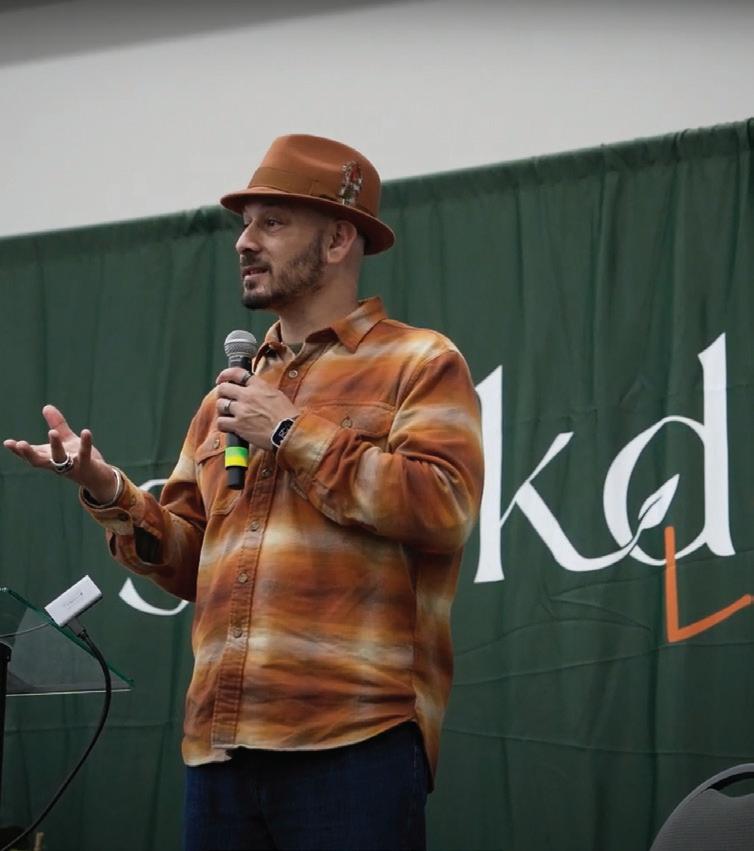
Love, it is the core of the new language of leadership … It is our ability as leaders to be vulnerable, to be authentic, to be relatable and to connect with people on a human level, to connect to their hearts.
- Pam Dooley
The chemical we use to modify [Kebony] lumber is a biobased liquid. It is a byproduct of the corn and sugarcane industry called furfuryl alcohol. You could actually use our boards as cutting boards to eat off of. It’s non-toxic, just ground-up corn and sugarcane and the liquid that comes out of that. It’s a very eco-friendly process with easy modification … We’re the only dually modified product on the market. It’s a heating element and a chemical element that modifies the wood on a cellular level.
- Andy Kelly
Southeast Regional Sales Manager for Kebony North America Owner of Plants Creative Landscapes
Presentation:
Furfurylated Wood: A Green Alternative to Tropical Hardwoods


Water conservation is a big deal to me personally, and it’s a big deal to the organization I represent … In today’s day and age, everybody wants to put a piece of technology on something and call it efficient. With an irrigation system … there are two goals. Goal number one is to maintain a vibrant, healthy green space. Goal number two is doing it while applying the least amount of water possible. With that, I’m going to look at two pieces … We’ve got the brain, which is the controller, and then, we have the body. The analogy I like to use a lot is, ‘I’m a basketball fan. If you give me Michael Jordan’s brain, don’t expect me to slam dunk a basketball.’
- Kevin Battistoni
Water: The Next Gold! Upselling Sustainability to Clients National Customer Experience Manager for Hunter Industries
Presentation:
Salvia ‘May Night’ [is an example of a] traditional plant that has always been on the market and has always been a [strong] variety, but what Darwin Perennials has been able to do is take that plant and make it better. That is the basis of my conversation today, because there are plants out there that [seem] tried and true, but they’re not … until you make them better.
Account Development Representative for Ball Horticultural Company
Presentation: Stop Using Old Plant Varieties (Use Better Versions!)







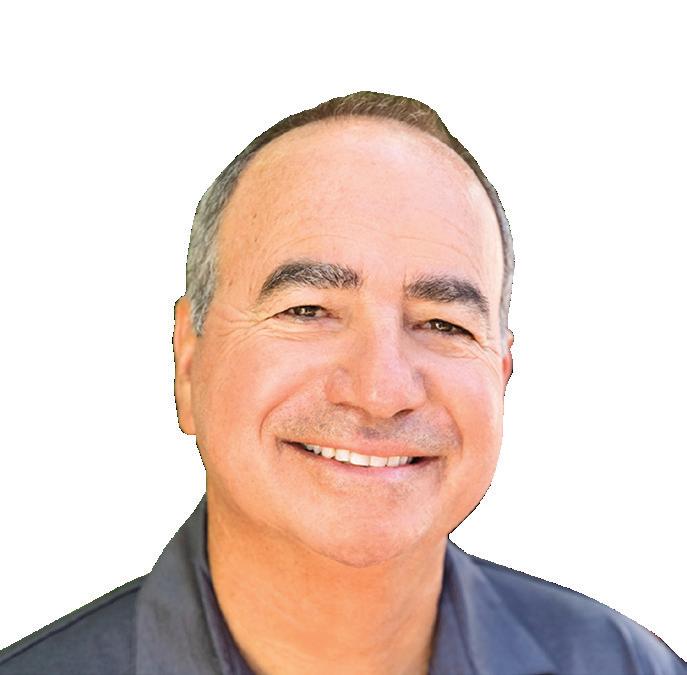
Franco D’Ascanio , President & CEO of D’Asign Source & Coastal Source, on
Rising tides and extreme temperatures are impacting coastal living and outdoor living in general, more than ever before. Having lived and worked in South Florida for decades, the team at Coastal Source has experienced the environmental shift firsthand. Mother Nature is a powerful force, and the increasingly harsher elements unfurled along the coastline and beyond are putting a strain on outdoor living.
Landscapes, exterior housing materials and technologies are enduring significant wear and tear, and consumers now recognize the need for more resilient solutions to mitigate the damage. This includes exterior light fixtures and loudspeakers. Products engineered,
designed and manufactured to withstand the elements are more important than ever to ensure outdoor living spaces look and sound their best. It’s time to come to terms with global climate change and adjust our selection and designs of outdoor technology accordingly.
It’s impossible to develop solutions to problems without first understanding exactly what you’re dealing with. Unless you’ve lived through a hurricane, tidal surges and torrential rainfall, it’s difficult to grasp the severity of the situation and formulate a plan to battle these extreme conditions. Before you can develop products to outwit the weather, you must first determine how salt water, humidity and high winds wear away at speaker

housings and light fixtures; analyze how these conditions impact performance and reliability and learn when and where to expect maintenance and repairs to occur.
Having operated design, installation and manufacturing businesses focused on outdoor living in South Florida for decades, D’Asign Source, parent company of Coastal Source and its outdoor living and environments department, has seen and done it all. Based on our vast experience catering to the high expectations of luxury homeowners, a deep respect for the coastal climate and landscape and an understanding of the unique challenges encountered by systems integrators and designers, we know which materials, technologies and designs work in wet, windy and salty environments.
Over the years, we’ve evolved our design and manufacturing approaches to align with climate change and sustainability practices. We put our products through the wringer before they make it to market by testing their resilience and endurance in the field and inside salt and UV chambers.
We saw the proverbial writing on the wall decades ago, when our design installation team at D’Asign Source struggled consistently to find products that could handle the harsh coastal weather without

continual maintenance and repair. Revisiting projects, as we all know, eats into precious time and resources. We knew we needed better, higher-quality outdoor light fixtures and speakers and pleaded with our vendors, to no avail.
As a result, Coastal Source was born quite literally out of necessity. Since then, what once was a niche market has skyrocketed into one of the fastest growing segments of the integration industry. Monetizing this market opportunity for our partners is now our next great opportunity. Lighting and speakers that are built to last and perform reliably in severe outdoor conditions pave the way to greater partner sales and profitability.
D’Asign Source still functions as our living research and development laboratory. When our integrators encounter challenges or identify a need as they design and deploy outdoor lighting and speakers, we know immediately about it and go to work to develop a solution. These observations have enabled us to stay one step ahead of climate change and the competition with efficient, effective R&D. It’s one thing to design products that meet certain performance specs; it’s quite another to innovate based on what’s necessary in the field.
We’ve tested and seen our outdoor light fixtures shine brightly underneath
a flooded yard and speakers stand up to extreme heat. Still, there’s always a chance that something will malfunction. Rather than toss out and replace the entire fixture, we’ve created new lighting lines that allow integrators to detach a module containing all the technology and circuitry from the fixture, which stays intact. A new module snaps back in place, which streamlines maintenance and reduces waste. As new modules are introduced, they can be added to keep the system up to date, performing optimally and defying the elements.

Meanwhile, our speakers feature a unique field-tested, sealed enclosure to prevent water, moisture and dirt from seeping into the circuitry—but with strategically placed, protected vents to ensure optimal audio performance. You get all the advantages of a sealed cabinet without the typical audio compromise.
Materials also matter, and through rigorous testing in the field and in the lab, we’ve determined the ideal
composition to withstand heat, moisture and other outdoor elements. Conditions are growing more intense every day, so we keep a close pulse on our designs and selection of materials. For example, brass, extruded/machined aluminum and specialty composites resist corrosion better than other materials like the commonly used and inexpensive cast aluminum, so we elect to build our products with these superior materials that truly defy the elements.
Furthermore, to combat heat buildup that occurs naturally when speakers are exposed to high temperatures and sunlight, we’ve developed a unique internal heat syncing technology that allows the internal heat generated by the speaker drivers to be efficiently conducted to the outside environment. Based on our own thermal analysis, it works and has the potential to double the lifespan of outdoor speakers.
Even though the climate may be unkind to us at times, we remain steadfast in our sustainability and eco-friendly design objectives. Our plug-and-play installation architecture, combined with the use of recyclable materials and low-power consumption, ensure that our outdoor lighting and speakers are as green as possible.
Weather patterns will continue to shift; so too will high-quality entertainment from the inside of a home to the outside. These two significant trends are fueling the demand for more durable, high-performance outdoor lighting and speakers. Coastal Source rises to the challenge through comprehensive and consistent field and laboratory testing to ensure the products you install today can take on whatever Mother Nature throws at them.
Coastal Source
Phone: 1 (800) 719–1996
Email: info@coastalsource.com coastalsource.com









Upgrading a client’s irrigation system with a wifi-capable smart controller and regulating sprinkler pressure are a winning combination for landscape contractors, their clients and the environment.
According to the U.S. Environmental Protection Agency’s (EPA) WaterSense website, water experts estimate that 50 percent of water used outdoors is lost to evaporation, wind or runoff from overwatering. That’s the bad news. The good news is that these two irrigation system additions are an easy way contractors can save their customers money and lessen their environmental impact while boosting their own revenue stream.
Upgrading to a smart controller can save the average homeowner 15,000 gallons of water annually, a 30 percent reduction in usage, the EPA reports. Regulating water pressure further reduces consumption, saving 18,000 to 20,000 gallons annually—enough to fill a swimming pool.
If a client’s old controller is upgradable, installing and programming a new smart controller can take 30 minutes or less. Once paired with a local weather station, the device receives precise data—temperature, humidity, wind speed and precipitation— enabling it to adjust watering based on the most current weather conditions.
Some controllers can even be programmed with specific information about what’s growing in the landscape—plant type, water requirements and root depth—to further tailor watering cycles for maximum savings while ensuring plant health.
Some additional benefits of smart controllers include:
• The ability to monitor the system and program the controller remotely, reducing the need for on-site visits and manual adjustments.
• Immediate notification when something goes wrong with the system, allowing for remote shutoff via a smartphone or tablet if the controller doesn’t do it automatically.
• Avoiding penalties for overwatering or accidentally watering on the wrong day in communities where water use is regulated.

Fluctuating water pressure can wreak havoc on a landscape and its irrigation system. Low pressure can lead to uneven
spray, causing large patches of brown throughout the lawn. High pressure not only has the potential to damage the system, it also can cause sprinkler nozzles to emit a fine mist that evaporates instead of reaching the landscape.
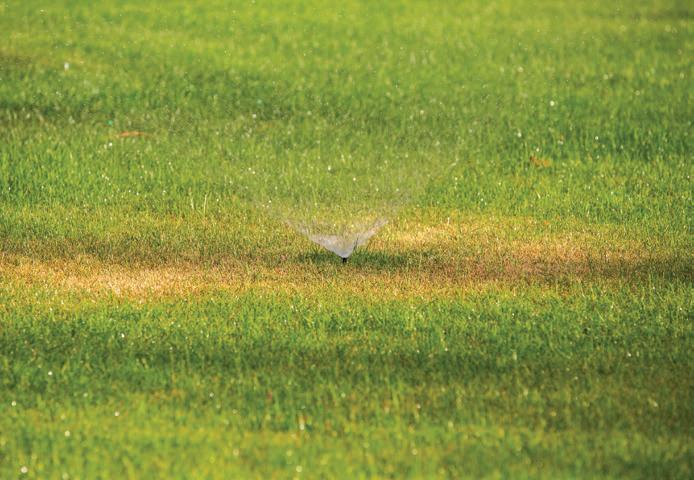
Water pressure—pounds per square inch (PSI)—can vary dramatically by area. Pump stations and valves provide some PSI control, but pressure deteriorates as water moves through each sprinkler head. As a result, the last head on the irrigation zone will have lower pressure than the first head, reducing spray coverage.
The ideal way to control PSI is at the sprinkler head, with a pressure-regulating spray (PRS) head or rotor, or even bubblers and drip zones. Pressure coming into and through the valve is usually higher than optimal for the head, but a PRS head/rotor ensures that the pressure at every head is the same and only allows it up to the optimal PSI for that head.
Preventing water loss from misting and ensuring even watering are the two primary benefits of PRS. They also ensure that pressure is spread evenly throughout each sprinkler head on the zone when there isn’t enough water pressure to reach optimal PSI at all heads.
Water pressure also controls the distance of the spray stream. Systems in lowpressure areas can be designed to take that into account.
Be sure to check local and state codes before planning an upgrade to ensure it complies with regulations addressing the sale and/or use of pressure-regulating spray heads. You may still want to use PRS for their benefits even if you’re not in an area that has regulatory requirements.
• Reduces runoff and minimizes overspray
• Ensures uniform water distribution
• Prevents under- and over-watering
• Decreases the need to manually adjust or reposition sprinklers
The bottom line? Regulating PSI at the head is the most efficient way to save water and improve the landscape.


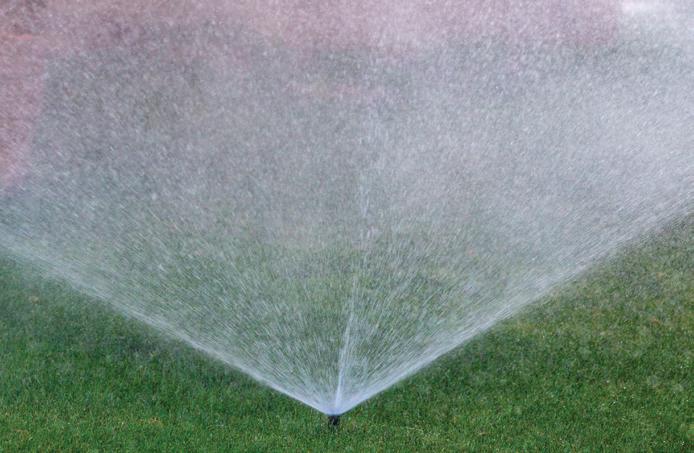
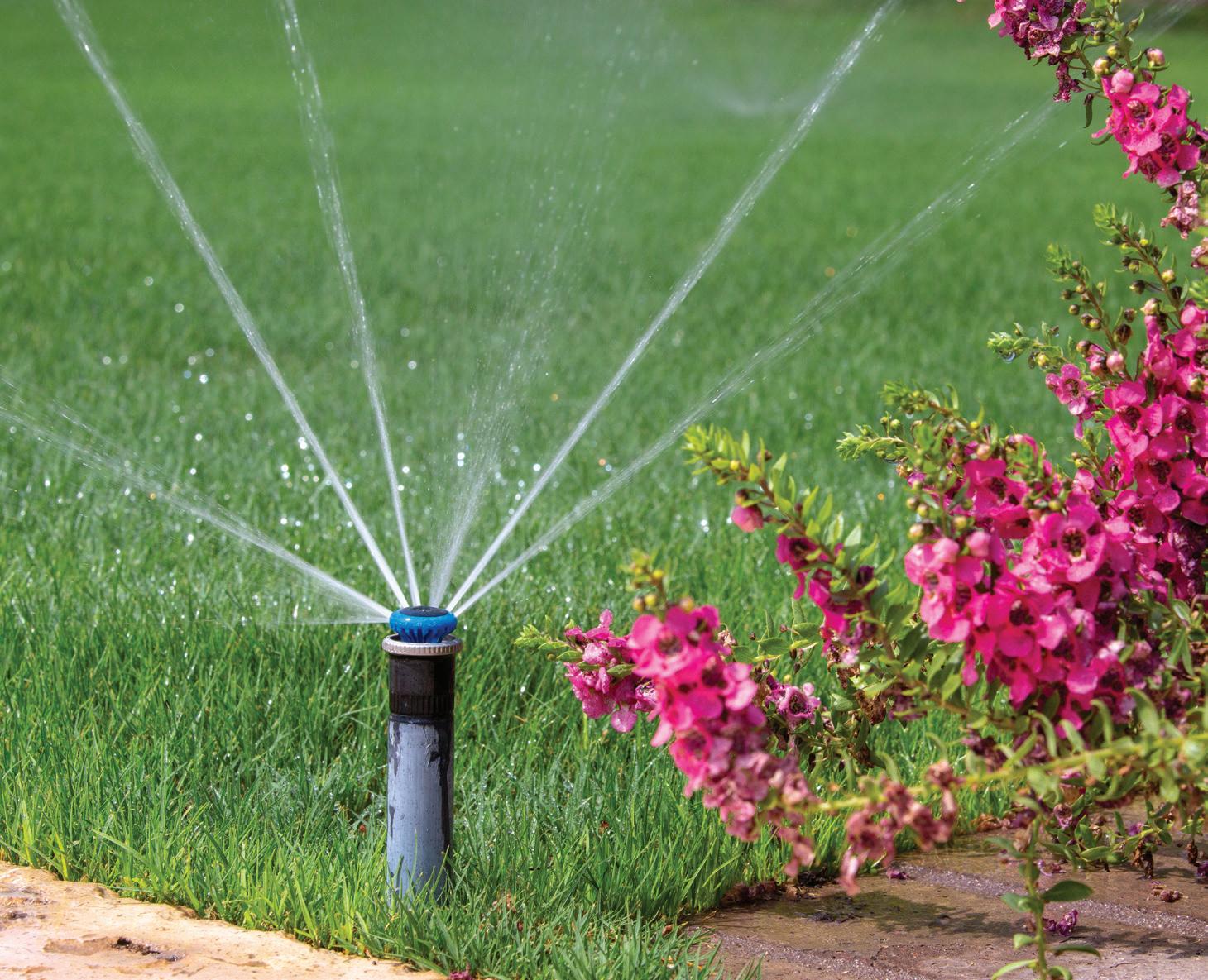
Is it worth it to upgrade an irrigation system’s controller and sprinkler heads? The answer is a resounding “yes.” Upgrade costs are easily offset by water cost savings and potential rebates.
Upgrading also allows landscape contractors to build trust with their clients by proving their ability to save them time and money, to sell other irrigation products or services and to build their business through referrals from happy customers.
Talk with your distributor’s irrigation experts for ideas, resources, solutions and strategies to help your clients and build your business. For more information about water-efficient landscapes, WaterSense-labeled products and more, visit epa.gov/watersense.
1 Hunter Pro HC Controller Install
2 Spray Head Sprinkler
3 Misting too much pressure
4 Correct Pressure
Photos courtesy of ©Kyle Ellsworth, Ewing Outdoor Supply


U.S. households use an estimated 29 billion gallons of water daily. Nearly nine billion gallons are used outdoors. 28 million homes have in-ground sprinkler systems controlled with inefficient devices. Upgrading them could save 390 billion gallons and $4.5 billion in water costs annually.
Source: epa.gov/watersense
Ian Yarian is Ewing Outdoor Supply’s national irrigation category manager, supporting more than 250 locations nationwide. www.EwingOutdoorSupply.com About Ian Yarian
Larry Giroux
Email: lgiroux@ewingos.com www.EwingOutdoorSupply.com
October 15-18, 2024

Welcome

OCTOBER 15-18, 2024 LOUISVILLE, KENTUCKY
Early Bird Pricing Ends After September 5, 2024
Equip Exposition is the annual event dedicated to growing landscapers’, hardscapers’, builders’, contractors’ and dealers’ businesses. Find the latest and greatest products across 1.1 million square feet of exhibits and pit your favorite brands against each other to find the champ. That’s why they call us the proving ground.
Opening





Coastal Source® has set the standard for excellence in high-performance Outdoor Lighting and Audio. Years of dedicated research and innovation qualify our products to endure the harshest of outdoor environments, while delivering the epitome of quality and sound.
Coastal Source patented Plug+Play™ Outdoor Lighting Systems set the stage for quality time spent with family and friends long after the sun goes down. Pair with our award winning Outdoor Audio Systems to create the ultimate outdoor retreat!
Available through authorized dealers and contractors. coastalsource.com | 800.719.1996